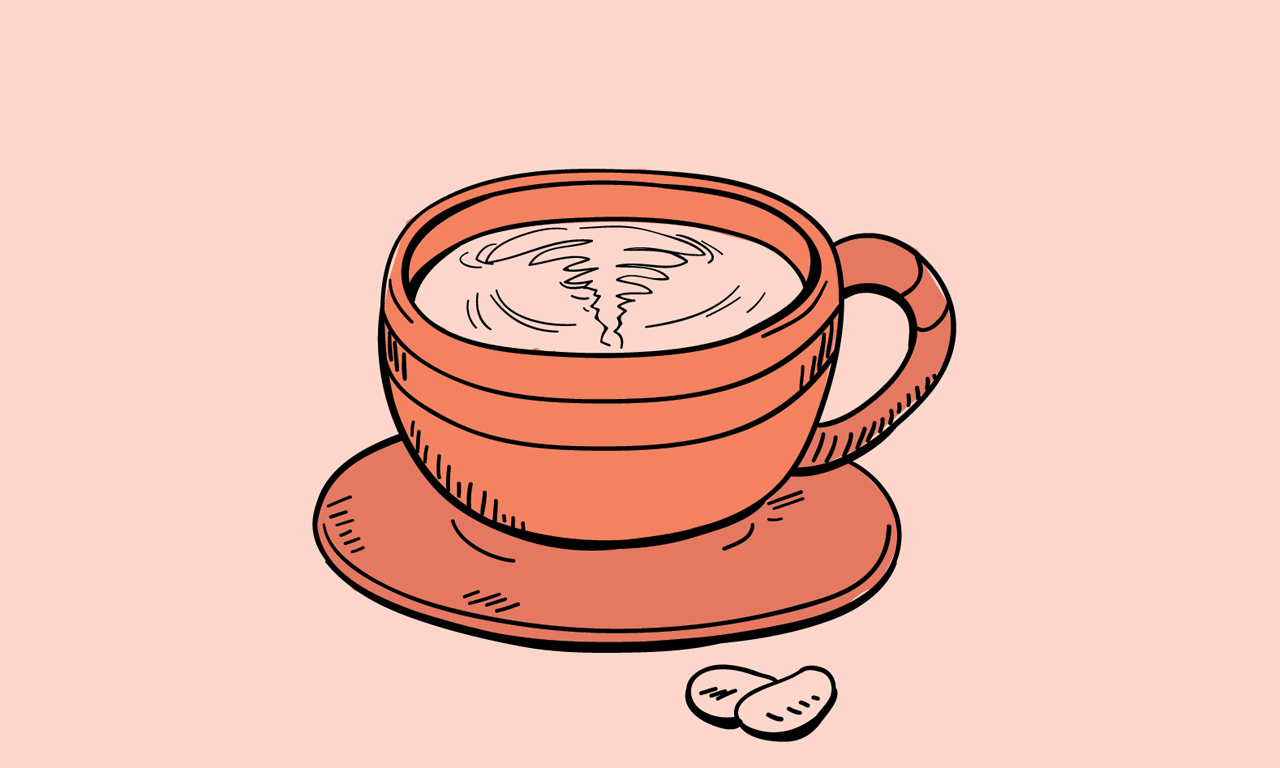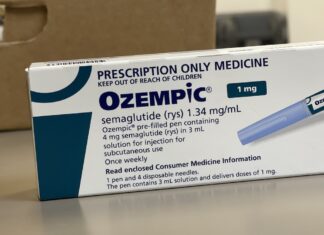

td_module_mega_menu Object
(
[post] => WP_Post Object
(
[ID] => 28625
[post_author] => 3410
[post_date] => 2025-02-05 12:20:54
[post_date_gmt] => 2025-02-05 01:20:54
[post_content] => From manual temperature checks to proper vaccine packaging, here’s what pharmacists need to know to protect patients, stock – and reputations.
Think you’ve mastered cold chain protocol? Think again. PSA’s Pharmacist-to-Pharmacist Advice Line receives more calls than you may think about risks to cold chain and possible breaches.
So what problems do pharmacists call with? PSA’s expert pharmacist advisors have rounded up some of their most pressing queries… and how they helped pharmacists find a resolution.
1. Do I still have to manually measure the fridge temperature if I have a data logger?
Yes!
A pharmacist who recently contacted the Pharmacist-to-Pharmacist Advice Line was surprised to learn during an audit that despite having a temperature data logger for her pharmacy’s vaccine fridge, she was not compliant with cold chain regulations, said Pooja Jadeja MPS.
[caption id="attachment_28631" align="alignright" width="209"] Pooja Jadeja MPS[/caption]
‘Pharmacies are often under the impression that when they've passed Quality Care Pharmacy Program (QCPP) requirements, that they are up to date,’ she said.
‘But QCPP compliance doesn’t factor in this national guidelines requirement. And during an [regulatory] audit, they are informed that they have to manually log the maximum/minimum temperatures twice a day in order to be compliant with the “Strive for 5” National Vaccine Storage Guidelines.’
So why do pharmacists need to manually record this data when they have an automated process in place?
‘Data loggers are generally linked to the pharmacy email [account], and with the plethora of emails coming through, pharmacists often miss alerts and aren't checking maximum/minimum temperatures on a daily basis,’ said Ms Jadeja.
‘Doing a manual check at the beginning and end of the day will identify a cold chain breach in a timely manner so that action can be taken accordingly.’
When a pharmacy is deemed non-compliant with the Strive for 5, they will need to sift through their data logs to prove their vaccine fridge has been within the required temperature range.
‘They would have to go in and check the data logger temperatures’ she said. ‘Then put a plan in place to ensure they are checking [temperatures] regularly, and submit that to the [health department] with evidence to show they have taken steps to record manual readings,’ she said.
Pooja Jadeja MPS[/caption]
‘Pharmacies are often under the impression that when they've passed Quality Care Pharmacy Program (QCPP) requirements, that they are up to date,’ she said.
‘But QCPP compliance doesn’t factor in this national guidelines requirement. And during an [regulatory] audit, they are informed that they have to manually log the maximum/minimum temperatures twice a day in order to be compliant with the “Strive for 5” National Vaccine Storage Guidelines.’
So why do pharmacists need to manually record this data when they have an automated process in place?
‘Data loggers are generally linked to the pharmacy email [account], and with the plethora of emails coming through, pharmacists often miss alerts and aren't checking maximum/minimum temperatures on a daily basis,’ said Ms Jadeja.
‘Doing a manual check at the beginning and end of the day will identify a cold chain breach in a timely manner so that action can be taken accordingly.’
When a pharmacy is deemed non-compliant with the Strive for 5, they will need to sift through their data logs to prove their vaccine fridge has been within the required temperature range.
‘They would have to go in and check the data logger temperatures’ she said. ‘Then put a plan in place to ensure they are checking [temperatures] regularly, and submit that to the [health department] with evidence to show they have taken steps to record manual readings,’ she said.
2. What happens to NIP stock if the power goes out?
Severe storms hit Sydney and regional New South Wales in mid-January, leading to mass power outages.
One affected premise happened to be a small pharmacy, which went on to experience a cold chain breach.
‘The power outage went for over 15 minutes, so they had to dispose of all of their vaccine stock, including [National Immunisation Program] stock, and some private vaccines,’ said Ms Jadeja.
But before disposing of the vaccines, Ms Jadeja advised the pharmacy to declare the NIP stock that was affected by the cold chain breach.
‘Any cold chain breach of NIP stock must be reported to the relevant state or territory health department and [depending on the jurisdiction] disposed of immediately,’ she said. ‘Then the pharmacy can place an order for new NIP stock.’
Before discarding NIP stock, contact your jurisdiction's health department or check health department guidance specific to your state of territory.
For any other vaccines or refrigerated medicine, a record must be kept on the length of the breach and what temperature the fridge reached.
‘This can be checked with either the fridge maximum/minimum temperature log at the front or via the data logger,’ said Ms Jajeda.
Pharmacists must consult the product manufacturer about next steps.
‘In 99% of cases, vaccines have to be disposed of, and that's a loss the pharmacy takes,’ she said.
‘But other medicines may be okay for a certain period of time at a higher temperature, depending on how high the temperature went and how long it stayed at that temperature.’
3. Can vaccines be removed from their packing and stored in a basket in the fridge?
In short: it’s a very bad idea.
Vaccine packaging can be relatively bulky, particularly if it includes outer cartons, pre-filled syringes or vials with diluents, taking up valuable refrigeration space.
So what’s the harm in taking the product out of its original packing to fit more into the vaccine fridge?
One pharmacist found out exactly why this is not advisable post-audit.
‘When vaccines are exposed to light, this can degrade the vaccine and cause it to lose potency,’ said Ms Jadeja. ‘So this pharmacist had to throw out all the vaccines that had been removed from the packaging.’
According to Strive for 5 National Vaccine Storage Guidelines, the outer carton not only protects vials or syringes from light and temperature fluctuations when the refrigerator door is opened, but also includes critical information such as the batch number, expiry date, and product inserts – which may be important for reference and monitoring.
4. What’s the worst-case scenario in the event of a cold chain breach?
When one pharmacy’s fridge temperature was compromised, the team only realised a week later after checking the data logger that a significant cold chain breach had occurred.
From there, the pharmacy had to check how long the fridge temperature was affected and what temperature it reached to determine if each vaccine is still viable and effective, said PSA NSW State Manager Amanda Fairjones MPS.
‘Pharmacists should consult the vaccine manufacturer and ask if they have data to show the vaccine is still effective at 8° C, and at a maximum of 15°C, for example.’
In the case of a cold chain breach, pharmacists must report it to their local public health unit and isolate affected vaccines with a ‘DO NOT USE’ sign, and if possible, transfer them to another vaccine fridge while maintaining +2°C to +8°C.
Download and review the data log, keeping the logger in place if power fails.
But if push comes to shove, pharmacists may have to revaccinate patients who were immunised during the duration of the cold chain breach.
Getting on top of the issue early can help to prevent the unfortunate event of a media notification, as was the case with Holy Family Medical Centre in Sydney’s inner west.
More than 1,200 of the practice’s patients, including hundreds of children under 5 years of age receiving their first vaccinations, were advised that vaccines administered over a 4.5-year period might have been less effective due to improper storage.
This can not only undermine confidence in a business, but in vaccination more broadly.
Did you know you need to do an annual self-audit of cold chain?
To comply with national cold chain requirements, pharmacists must complete a Vaccine storage self-audit at least every 12 months.
‘This is something pharmacists should do [annually] to identify any gaps in their cold chain management protocol, which will ensure that they remain compliant with cold chain management,’ said Ms Jadeja.
The self-audit tool covers storage procedures, fridge certification requirements and having the cold chain breach protocol on display in the pharmacy.
‘It just ensures your pharmacy is ready for any incident that may occur, because you can't plan for incidents,’ she said.
And if you are based in New South Wales, you may be paid a visit by an auditor sooner rather than later.
Because vaping regulations changed in 2024, with vaping products downscheduled to Pharmacist Only medicines, pharmacists are being audited more frequently.
‘These audits are designed to educate pharmacists on how to [prescribe] vapes in a compliant manner,’ said Ms Jadeja. ‘While they're checking vaping products are stored correctly and whether we know how to do the [Special Access Scheme] approvals, they're also checking everything else, including cold chain storage.’
For advice on all things pharmacy, ring PSA’s Pharmacist-to-Pharmacist Advice Line between 8.30am to 5.00pm AEST on 1300 369 772.
This article was updated on 6 February 2025 clarify what pharmacists should do in the event of compromised NIP stock due to a cold chain breach.
[post_title] => Don’t let a cold chain breach take you by surprise
[post_excerpt] => From manual temperature checks to proper vaccine packaging, here’s what pharmacists need to know to protect patients, stock – and reputations.
[post_status] => publish
[comment_status] => open
[ping_status] => open
[post_password] =>
[post_name] => dont-let-a-cold-chain-breach-take-you-by-surprise
[to_ping] =>
[pinged] =>
[post_modified] => 2025-02-06 09:57:52
[post_modified_gmt] => 2025-02-05 22:57:52
[post_content_filtered] =>
[post_parent] => 0
[guid] => https://www.australianpharmacist.com.au/?p=28625
[menu_order] => 0
[post_type] => post
[post_mime_type] =>
[comment_count] => 0
[filter] => raw
)
[title_attribute] => Don’t let a cold chain breach take you by surprise
[title] => Don’t let a cold chain breach take you by surprise
[href] => https://www.australianpharmacist.com.au/dont-let-a-cold-chain-breach-take-you-by-surprise/
[module_atts:td_module:private] => Array
(
)
[td_review:protected] => Array
(
)
[is_review:protected] =>
[post_thumb_id:protected] => 28634
[authorType] =>
)
td_module_mega_menu Object
(
[post] => WP_Post Object
(
[ID] => 28600
[post_author] => 3410
[post_date] => 2025-02-03 13:06:59
[post_date_gmt] => 2025-02-03 02:06:59
[post_content] => Medication errors and poisonings are leading to a staggering number of avoidable hospitalisations among children and adolescents. Find out which medicines pose the biggest risks and how pharmacists can help turn the tide.
An alarming number of Australian children and adolescents are impacted by medicine-related harm. Every day, around 93 children present to emergency departments due to a medicine-related problem – half of which are preventable.
And adverse events due to medicines are all too commonplace, with an estimated 120,000 children aged 0–14 years affected in the last 6 months.
Along with the emotional and physical toll on children and their families, medicine-related harm also carries a significant financial burden to the tune of $130 million per annum.
These alarming statistics, and more, were highlighted in PSA’s Medicine safety: child and adolescent care report, released on Friday by PSA National President Associate Professor Fei Sim and Ged Kearney, Assistant Minister for Health and Aged Care Assistant Minister for Indigenous Health.
[caption id="attachment_28617" align="alignnone" width="500"] PSA National President Associate Professor Fei Sim and Ged Kearney, Assistant Minister for Health and Aged Care Assistant Minister for Indigenous Health[/caption]
‘Our health system is failing children and adolescents,’ said A/Prof Sim. ‘As a health community, we must commit to doing better, but we also need to be given the resources and tools to do better.’
Here’s a look at the key findings and the tangible solutions pharmacists can employ to make a difference.
PSA National President Associate Professor Fei Sim and Ged Kearney, Assistant Minister for Health and Aged Care Assistant Minister for Indigenous Health[/caption]
‘Our health system is failing children and adolescents,’ said A/Prof Sim. ‘As a health community, we must commit to doing better, but we also need to be given the resources and tools to do better.’
Here’s a look at the key findings and the tangible solutions pharmacists can employ to make a difference.
Steep increase in self-poisonings among teens
Poisoning remains a major risk for children and adolescents, leading to around 8 hospitalisations daily.
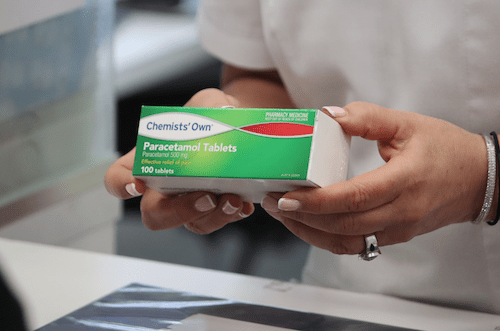 Younger children are particularly susceptible to poisoning, often due to accidental ingestion or dosing errors. In children under 5 years of age, poisoning admissions increased from 12% in 2013–14 to 16% in 2022–23, with medicines affecting the cardiovascular system the most common cause.
While concerning, the number of hospitalisations among children aged 5–9 remains relatively low. But poisonings – both accidental and intentional – are increasingly prevalent in adolescents.
Paracetamol and antidepressants are the leading causes of poisoning-related hospital admissions, particularly among girls aged 10–14 years and adolescent females aged 15–19 years. In fact, 68% of all pharmaceutical poisoning admissions in 2022–23 were in adolescents aged 15–19 years.
Beyond hospital data, the New South Wales Poisons Information Centre (PIC) receives thousands of calls each year; among adolescents, calls about antidepressant exposures, including fluoxetine and sertraline, are increasingly prominent.
Younger children are particularly susceptible to poisoning, often due to accidental ingestion or dosing errors. In children under 5 years of age, poisoning admissions increased from 12% in 2013–14 to 16% in 2022–23, with medicines affecting the cardiovascular system the most common cause.
While concerning, the number of hospitalisations among children aged 5–9 remains relatively low. But poisonings – both accidental and intentional – are increasingly prevalent in adolescents.
Paracetamol and antidepressants are the leading causes of poisoning-related hospital admissions, particularly among girls aged 10–14 years and adolescent females aged 15–19 years. In fact, 68% of all pharmaceutical poisoning admissions in 2022–23 were in adolescents aged 15–19 years.
Beyond hospital data, the New South Wales Poisons Information Centre (PIC) receives thousands of calls each year; among adolescents, calls about antidepressant exposures, including fluoxetine and sertraline, are increasingly prominent.
Off-label medicine use fuelling adverse reactions
Many medicines prescribed for children have not been specifically tested in paediatric populations, leading to widespread off-label use.
An estimated 12–45% of medicines used in children are off-label, increasing the risk of adverse reactions. And while medicine-medicine interactions are understudied in Australian children, international evidence suggests that exposure to major drug interactions in paediatric patients may be higher than anticipated.
With diagnoses of autism and ADHD on the rise – conditions which are linked to sleep disturbances – many parents are administering melatonin off-label to children, often obtaining it online and perceiving it as a ‘natural product’ rather than a medicine.
But the NSW PIC has received a growing number of melatonin exposure-related calls, with nearly 850 in 2022 alone.
Poisonings linked to clonidine, prescribed off-label for ADHD, are also frequently reported. Due to its tablet formulation, clonidine has been associated with dosing errors, particularly among young children – who may accidentally take a whole tablet instead of the prescribed half or quarter of a tablet.
Treating mental health conditions comes with risks
The significant uptick of mental ill health in today’s youth has led to a massive increase in the use of medicines for mental health conditions in children, including antidepressants and ADHD medications.
While these medicines can be beneficial, they are also associated with risks, including cardiometabolic side effects from antipsychotics and dependency risks from stimulants. A key issue is the lack of health literacy among parents and caregivers, leading to medication errors, inappropriate dosing, or failure to recognise adverse effects.
Pharmacists critical to harm prevention
The report’s release coincides with new restrictions on paracetamol pack sizes, which came into effect on Saturday 1 February, to reduce risks of intentional overdose. Pharmacy medicine packs are now limited to 50 tablets in most states, with larger packs upscheduled to Pharmacist Only medicines.
‘Paracetamol and antidepressants are the leading causes of poisoning-related hospital admissions, particularly among girls aged 10–14 years.'
‘By involving pharmacists in the supply of larger paracetamol pack sizes, we strike the right balance between access and safety, giving pharmacists and pharmacy assistants the opportunity to help patients manage their pain effectively while reducing the risk of misuse and harm,’ said A/Prof Sim.
The report suggests that mandating an indication on prescriptions could also ensure pharmacists verify the appropriateness of each medication. For example, when a child receives an antibiotic, pharmacists can confirm it’s suitable for the specific infection and the patient’s age before dispensing.
Accurate dosing is another key priority area. Given children’s dosage often depends on weight and age, pharmacists should manually check every paediatric dose rather than relying solely on automated systems. For example, if a 15 kg child is prescribed amoxicillin, pharmacists should calculate an appropriate mg/kg dose and contact the prescriber if it exceeds recommended limits.
From a systems perspective, designing a national medicine safety monitoring system – akin to Canada’s AIMS (Assurance and Improvement in Medication Safety) – will allow pharmacists to log and analyse medication errors in real time. This data-driven approach helps identify trends in paediatric medicine use, preventing repeated mistakes.
Removing legal barriers so pharmacists can modify medication formulations, such as creating a liquid formulation of clonidine for a child who can’t swallow pills, can also reduce errors and improve adherence.
But beyond clinical responsibilities, pharmacists should educate parents, teachers, and caregivers on medicine safety. This includes guidance on correct administration techniques, such as using a syringe for accurate measurement, and safe storage practices to prevent accidental ingestion.
‘Pharmacists are critical to ensure the safe use of medicines and must be supported to do so,’ said A/Prof Sim.
‘That means adequately staffing children’s hospital wards with the expertise of pharmacists, investing in systems that capture the data needed for evidence-based policy, and improving the quality use of medicines whenever medicines are used.
‘It takes all of us, across all areas of practice and indeed across all health professions, to make a difference to the children and adolescents who rely on our care.’
Access PSA’s full Medicine safety: child and adolescent care report here.
[post_title] => Why are so many children harmed from medicines?
[post_excerpt] => Medication errors and poisonings are leading to a staggering number of avoidable hospitalisations among children and adolescents.
[post_status] => publish
[comment_status] => open
[ping_status] => open
[post_password] =>
[post_name] => why-are-so-many-children-getting-harmed-from-medicines
[to_ping] =>
[pinged] =>
[post_modified] => 2025-02-03 15:46:47
[post_modified_gmt] => 2025-02-03 04:46:47
[post_content_filtered] =>
[post_parent] => 0
[guid] => https://www.australianpharmacist.com.au/?p=28600
[menu_order] => 0
[post_type] => post
[post_mime_type] =>
[comment_count] => 0
[filter] => raw
)
[title_attribute] => Why are so many children harmed from medicines?
[title] => Why are so many children harmed from medicines?
[href] => https://www.australianpharmacist.com.au/why-are-so-many-children-getting-harmed-from-medicines/
[module_atts:td_module:private] => Array
(
)
[td_review:protected] => Array
(
)
[is_review:protected] =>
[post_thumb_id:protected] => 28614
[authorType] =>
)
td_module_mega_menu Object
(
[post] => WP_Post Object
(
[ID] => 28575
[post_author] => 9577
[post_date] => 2025-01-30 13:44:48
[post_date_gmt] => 2025-01-30 02:44:48
[post_content] => Whether ‘tis nobler to use the foil bag to avoid the temperature excursions or . . . Putting William Shakespeare aside, what is the point of the foil bag?
Do foil bags keep medicines cold?
The National Vaccine Storage Guidelines ‘Strive for 5’ state that ‘foil bags commonly provided by pharmacists when vaccines are privately purchased are not effective in keeping vaccines at the correct temperature – for example, when the vaccine is left in a car or stored in a domestic refrigerator’.1
Suppliers of foil bags advise they are for transporting medicines that require short-term storage at a constant temperature until appropriate refrigeration can be reached.
They are not suitable for long-term storage.2 It is unclear whether foil bags provide thermal protection and for how long.
Some pharmacists use foil bags to remind the patient that the medicine in the bag needs to go in the fridge.
However, the patient should still be advised to take the medicine straight home to put it in the fridge and not to rely on the false sense of security that the foil bag will keep it cold while they ‘duck into the shops’.
What if the patient doesn’t have a fridge?
Not all patients have consistent access to a fridge (e.g. travelling, power outages, no fixed address).
It is useful to ask patients about this, and tailor your advice accordingly.
Cautionary Advisory Labels 6, 7a, 7b and 13 can supplement your verbal advice about storage where appropriate.3
For some medicines that require refrigeration, the approved Product Information (PI) contains guidance about room temperature storage options if refrigeration is unavailable or impractical.⁴
You can also offer to store the medicine or not-in-use containers at the pharmacy until needed (e.g. pending a doctor’s appointment, not-in-use insulin pens/cartridges).
Opened containers – in or out of the fridge?
It depends on the medicine.
The manufacturer has determined the stability and shelf-life of a medicine using the container and storage conditions outlined in the PI.
Keeping an in-use container in the fridge instead of at room temperature may extend its shelf-life. This might avoid wastage if the dose changes.
However, cold eye drops and injections can cause discomfort. They should generally be allowed to reach room temperature before they are administered.
In-use multi-dose injections or eye drops should be kept at room temperature unless otherwise advised by the PI.⁴
References
- Australian Government Department of Health. National Vaccine Storage Guidelines ‘Strive for 5’. 3rd edn. Canberra: Australian Government Department of Health; 2019.
- Stirling Fildes. Foil bags – medium. At: www.stirlingfildeshc.com.au/
- Sansom LN, ed. Australian Pharmaceutical Formulary and Handbook. 2024. At: https://apf.psa.org.au
- Medicines information. eMIMS cloud; [2024]. At: www.emims.com.au/Australia/drug/search
Our author

Claire Antrobus MPS (she/her) is PSA’s Manager – Practice Support.
[post_title] => To foil bag or not to foil bag, that is the question!
[post_excerpt] => Ever wondered about the point of foil bags and if they keep medicines cold? PSA clinical expert Claire Antrobus provides a helpful rundown.
[post_status] => publish
[comment_status] => open
[ping_status] => open
[post_password] =>
[post_name] => to-foil-bag-or-not-to-foil-bag-that-is-the-question
[to_ping] =>
[pinged] =>
[post_modified] => 2025-02-03 15:48:13
[post_modified_gmt] => 2025-02-03 04:48:13
[post_content_filtered] =>
[post_parent] => 0
[guid] => https://www.australianpharmacist.com.au/?p=28575
[menu_order] => 0
[post_type] => post
[post_mime_type] =>
[comment_count] => 0
[filter] => raw
)
[title_attribute] => To foil bag or not to foil bag, that is the question!
[title] => To foil bag or not to foil bag, that is the question!
[href] => https://www.australianpharmacist.com.au/to-foil-bag-or-not-to-foil-bag-that-is-the-question/
[module_atts:td_module:private] => Array
(
)
[td_review:protected] => Array
(
)
[is_review:protected] =>
[post_thumb_id:protected] => 28578
[authorType] =>
)
td_module_mega_menu Object
(
[post] => WP_Post Object
(
[ID] => 28563
[post_author] => 3410
[post_date] => 2025-01-29 13:07:12
[post_date_gmt] => 2025-01-29 02:07:12
[post_content] => From February, pack sizes of paracetamol sold in pharmacies will change. Here’s what pharmacists need to know.
Come Saturday (1 February 2025), paracetamol in packs containing 50-100 tablets or capsules will shift to Schedule 3 following the final decision on paracetamol access controls made by the Therapeutic Goods Administration (TGA) in 2023.
The aim is to reduce the volume of paracetamol kept in people’s homes to prevent harm from intentional overdose. Each year, around 225 Australians are hospitalised with liver injury and 50 Australians die from paracetamol overdose. The highest rates of intentional overdose are among adolescents and young adults – particularly females.
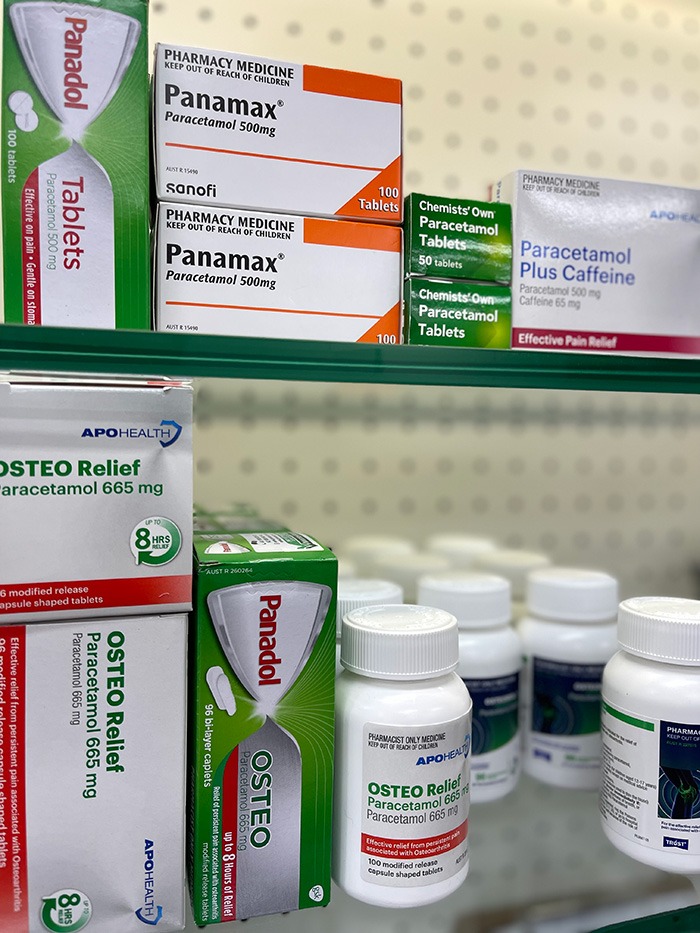 Pharmacists can help to reduce the amount of surplus paracetamol available in homes by being ‘champions for the change’, said Peter Guthrey MPS, PSA Senior Pharmacist – Strategic Policy.
‘While pharmacists know paracetamol is very safe when taken at recommended doses, we also know the devastating impact of intentional or unintentional overdose.
‘On Friday, PSA will be releasing the next edition of our flagship medicine safety report series which contains concerning data on the use of medicines, including paracetamol, in children and adolescents.’
‘The data on intentional overdose involving paracetamol is alarming … Scheduling changes are not the full solution, but are a strategy which could make a positive difference if it changes the patterns of paracetamol supply.’
Other countries have gone much further than Australia in limiting access to paracetamol, through measures such as scheduling and limiting pack purchases,’ he said.
Pharmacists can help to reduce the amount of surplus paracetamol available in homes by being ‘champions for the change’, said Peter Guthrey MPS, PSA Senior Pharmacist – Strategic Policy.
‘While pharmacists know paracetamol is very safe when taken at recommended doses, we also know the devastating impact of intentional or unintentional overdose.
‘On Friday, PSA will be releasing the next edition of our flagship medicine safety report series which contains concerning data on the use of medicines, including paracetamol, in children and adolescents.’
‘The data on intentional overdose involving paracetamol is alarming … Scheduling changes are not the full solution, but are a strategy which could make a positive difference if it changes the patterns of paracetamol supply.’
Other countries have gone much further than Australia in limiting access to paracetamol, through measures such as scheduling and limiting pack purchases,’ he said.
What are the changes?
The TGA’s decision includes changes to both pack sizes and packaging. The new regulations affect pain relief products containing paracetamol as the sole active ingredient and cold and flu medicines containing paracetamol in combination with other ingredients.
Access to liquid, modified release and Prescription Only paracetamol is not affected by the changes.
| Jurisdiction | Changes |
| Nationally |
|
| Western Australia and Queensland |
|
td_module_mega_menu Object
(
[post] => WP_Post Object
(
[ID] => 28554
[post_author] => 250
[post_date] => 2025-01-28 17:14:02
[post_date_gmt] => 2025-01-28 06:14:02
[post_content] => NSW pharmacist Anna Barwick MPS was awarded the Medal of the Order of Australia (OAM) in the 2025 Australia Day Honours.
Ms Barwick founded PharmOnline, an innovative platform which connects Australian patients living in remote areas with pharmacy services. A pharmacy academic from Walcha, NSW, she previously served on PSA’s NSW Branch Committee, including holding the role of vice-president from 2014-2020.
PSA National President Associate Professor Fei Sim FPS acknowledged Ms Barwick’s enormous contribution to pharmacy profession.
‘Anna is a truly outstanding pharmacist. A pioneer of innovation, she has consistently transformed access to care in her community and beyond,’ said A/Prof Sim.
‘I have been privileged to see first-hand Anna’s work, and hope that others are as inspired and energised as I am by her contribution to the community and to the next generation of pharmacists.
‘Long recognised by the profession, having won PSA’s Pharmacy Shark Tank award in 2021 and NSW Pharmacist of the Year in 2021, I am excited to see her achievements recognised on the national stage.
‘On behalf of PSA and the pharmacy profession, I sincerely congratulate Anna on this well-deserved recognition.’
Read more about 2021 PSA Pharmacist of tee Year Anna Barwick's passion for rural and remote pharmacy here.
[post_title] => Rural healthcare advocate honoured
[post_excerpt] => NSW pharmacist Anna Barwick MPS was awarded the Medal of the Order of Australia (OAM) in the 2025 Australia Day Honours.
[post_status] => publish
[comment_status] => open
[ping_status] => open
[post_password] =>
[post_name] => rural-healthcare-advocate-honoured
[to_ping] =>
[pinged] =>
[post_modified] => 2025-01-29 09:49:14
[post_modified_gmt] => 2025-01-28 22:49:14
[post_content_filtered] =>
[post_parent] => 0
[guid] => https://www.australianpharmacist.com.au/?p=28554
[menu_order] => 0
[post_type] => post
[post_mime_type] =>
[comment_count] => 0
[filter] => raw
)
[title_attribute] => Rural healthcare advocate honoured
[title] => Rural healthcare advocate honoured
[href] => https://www.australianpharmacist.com.au/rural-healthcare-advocate-honoured/
[module_atts:td_module:private] => Array
(
)
[td_review:protected] => Array
(
)
[is_review:protected] =>
[post_thumb_id:protected] => 28559
[authorType] =>
)
td_module_mega_menu Object
(
[post] => WP_Post Object
(
[ID] => 28625
[post_author] => 3410
[post_date] => 2025-02-05 12:20:54
[post_date_gmt] => 2025-02-05 01:20:54
[post_content] => From manual temperature checks to proper vaccine packaging, here’s what pharmacists need to know to protect patients, stock – and reputations.
Think you’ve mastered cold chain protocol? Think again. PSA’s Pharmacist-to-Pharmacist Advice Line receives more calls than you may think about risks to cold chain and possible breaches.
So what problems do pharmacists call with? PSA’s expert pharmacist advisors have rounded up some of their most pressing queries… and how they helped pharmacists find a resolution.
1. Do I still have to manually measure the fridge temperature if I have a data logger?
Yes!
A pharmacist who recently contacted the Pharmacist-to-Pharmacist Advice Line was surprised to learn during an audit that despite having a temperature data logger for her pharmacy’s vaccine fridge, she was not compliant with cold chain regulations, said Pooja Jadeja MPS.
[caption id="attachment_28631" align="alignright" width="209"] Pooja Jadeja MPS[/caption]
‘Pharmacies are often under the impression that when they've passed Quality Care Pharmacy Program (QCPP) requirements, that they are up to date,’ she said.
‘But QCPP compliance doesn’t factor in this national guidelines requirement. And during an [regulatory] audit, they are informed that they have to manually log the maximum/minimum temperatures twice a day in order to be compliant with the “Strive for 5” National Vaccine Storage Guidelines.’
So why do pharmacists need to manually record this data when they have an automated process in place?
‘Data loggers are generally linked to the pharmacy email [account], and with the plethora of emails coming through, pharmacists often miss alerts and aren't checking maximum/minimum temperatures on a daily basis,’ said Ms Jadeja.
‘Doing a manual check at the beginning and end of the day will identify a cold chain breach in a timely manner so that action can be taken accordingly.’
When a pharmacy is deemed non-compliant with the Strive for 5, they will need to sift through their data logs to prove their vaccine fridge has been within the required temperature range.
‘They would have to go in and check the data logger temperatures’ she said. ‘Then put a plan in place to ensure they are checking [temperatures] regularly, and submit that to the [health department] with evidence to show they have taken steps to record manual readings,’ she said.
Pooja Jadeja MPS[/caption]
‘Pharmacies are often under the impression that when they've passed Quality Care Pharmacy Program (QCPP) requirements, that they are up to date,’ she said.
‘But QCPP compliance doesn’t factor in this national guidelines requirement. And during an [regulatory] audit, they are informed that they have to manually log the maximum/minimum temperatures twice a day in order to be compliant with the “Strive for 5” National Vaccine Storage Guidelines.’
So why do pharmacists need to manually record this data when they have an automated process in place?
‘Data loggers are generally linked to the pharmacy email [account], and with the plethora of emails coming through, pharmacists often miss alerts and aren't checking maximum/minimum temperatures on a daily basis,’ said Ms Jadeja.
‘Doing a manual check at the beginning and end of the day will identify a cold chain breach in a timely manner so that action can be taken accordingly.’
When a pharmacy is deemed non-compliant with the Strive for 5, they will need to sift through their data logs to prove their vaccine fridge has been within the required temperature range.
‘They would have to go in and check the data logger temperatures’ she said. ‘Then put a plan in place to ensure they are checking [temperatures] regularly, and submit that to the [health department] with evidence to show they have taken steps to record manual readings,’ she said.
2. What happens to NIP stock if the power goes out?
Severe storms hit Sydney and regional New South Wales in mid-January, leading to mass power outages.
One affected premise happened to be a small pharmacy, which went on to experience a cold chain breach.
‘The power outage went for over 15 minutes, so they had to dispose of all of their vaccine stock, including [National Immunisation Program] stock, and some private vaccines,’ said Ms Jadeja.
But before disposing of the vaccines, Ms Jadeja advised the pharmacy to declare the NIP stock that was affected by the cold chain breach.
‘Any cold chain breach of NIP stock must be reported to the relevant state or territory health department and [depending on the jurisdiction] disposed of immediately,’ she said. ‘Then the pharmacy can place an order for new NIP stock.’
Before discarding NIP stock, contact your jurisdiction's health department or check health department guidance specific to your state of territory.
For any other vaccines or refrigerated medicine, a record must be kept on the length of the breach and what temperature the fridge reached.
‘This can be checked with either the fridge maximum/minimum temperature log at the front or via the data logger,’ said Ms Jajeda.
Pharmacists must consult the product manufacturer about next steps.
‘In 99% of cases, vaccines have to be disposed of, and that's a loss the pharmacy takes,’ she said.
‘But other medicines may be okay for a certain period of time at a higher temperature, depending on how high the temperature went and how long it stayed at that temperature.’
3. Can vaccines be removed from their packing and stored in a basket in the fridge?
In short: it’s a very bad idea.
Vaccine packaging can be relatively bulky, particularly if it includes outer cartons, pre-filled syringes or vials with diluents, taking up valuable refrigeration space.
So what’s the harm in taking the product out of its original packing to fit more into the vaccine fridge?
One pharmacist found out exactly why this is not advisable post-audit.
‘When vaccines are exposed to light, this can degrade the vaccine and cause it to lose potency,’ said Ms Jadeja. ‘So this pharmacist had to throw out all the vaccines that had been removed from the packaging.’
According to Strive for 5 National Vaccine Storage Guidelines, the outer carton not only protects vials or syringes from light and temperature fluctuations when the refrigerator door is opened, but also includes critical information such as the batch number, expiry date, and product inserts – which may be important for reference and monitoring.
4. What’s the worst-case scenario in the event of a cold chain breach?
When one pharmacy’s fridge temperature was compromised, the team only realised a week later after checking the data logger that a significant cold chain breach had occurred.
From there, the pharmacy had to check how long the fridge temperature was affected and what temperature it reached to determine if each vaccine is still viable and effective, said PSA NSW State Manager Amanda Fairjones MPS.
‘Pharmacists should consult the vaccine manufacturer and ask if they have data to show the vaccine is still effective at 8° C, and at a maximum of 15°C, for example.’
In the case of a cold chain breach, pharmacists must report it to their local public health unit and isolate affected vaccines with a ‘DO NOT USE’ sign, and if possible, transfer them to another vaccine fridge while maintaining +2°C to +8°C.
Download and review the data log, keeping the logger in place if power fails.
But if push comes to shove, pharmacists may have to revaccinate patients who were immunised during the duration of the cold chain breach.
Getting on top of the issue early can help to prevent the unfortunate event of a media notification, as was the case with Holy Family Medical Centre in Sydney’s inner west.
More than 1,200 of the practice’s patients, including hundreds of children under 5 years of age receiving their first vaccinations, were advised that vaccines administered over a 4.5-year period might have been less effective due to improper storage.
This can not only undermine confidence in a business, but in vaccination more broadly.
Did you know you need to do an annual self-audit of cold chain?
To comply with national cold chain requirements, pharmacists must complete a Vaccine storage self-audit at least every 12 months.
‘This is something pharmacists should do [annually] to identify any gaps in their cold chain management protocol, which will ensure that they remain compliant with cold chain management,’ said Ms Jadeja.
The self-audit tool covers storage procedures, fridge certification requirements and having the cold chain breach protocol on display in the pharmacy.
‘It just ensures your pharmacy is ready for any incident that may occur, because you can't plan for incidents,’ she said.
And if you are based in New South Wales, you may be paid a visit by an auditor sooner rather than later.
Because vaping regulations changed in 2024, with vaping products downscheduled to Pharmacist Only medicines, pharmacists are being audited more frequently.
‘These audits are designed to educate pharmacists on how to [prescribe] vapes in a compliant manner,’ said Ms Jadeja. ‘While they're checking vaping products are stored correctly and whether we know how to do the [Special Access Scheme] approvals, they're also checking everything else, including cold chain storage.’
For advice on all things pharmacy, ring PSA’s Pharmacist-to-Pharmacist Advice Line between 8.30am to 5.00pm AEST on 1300 369 772.
This article was updated on 6 February 2025 clarify what pharmacists should do in the event of compromised NIP stock due to a cold chain breach.
[post_title] => Don’t let a cold chain breach take you by surprise
[post_excerpt] => From manual temperature checks to proper vaccine packaging, here’s what pharmacists need to know to protect patients, stock – and reputations.
[post_status] => publish
[comment_status] => open
[ping_status] => open
[post_password] =>
[post_name] => dont-let-a-cold-chain-breach-take-you-by-surprise
[to_ping] =>
[pinged] =>
[post_modified] => 2025-02-06 09:57:52
[post_modified_gmt] => 2025-02-05 22:57:52
[post_content_filtered] =>
[post_parent] => 0
[guid] => https://www.australianpharmacist.com.au/?p=28625
[menu_order] => 0
[post_type] => post
[post_mime_type] =>
[comment_count] => 0
[filter] => raw
)
[title_attribute] => Don’t let a cold chain breach take you by surprise
[title] => Don’t let a cold chain breach take you by surprise
[href] => https://www.australianpharmacist.com.au/dont-let-a-cold-chain-breach-take-you-by-surprise/
[module_atts:td_module:private] => Array
(
)
[td_review:protected] => Array
(
)
[is_review:protected] =>
[post_thumb_id:protected] => 28634
[authorType] =>
)
td_module_mega_menu Object
(
[post] => WP_Post Object
(
[ID] => 28600
[post_author] => 3410
[post_date] => 2025-02-03 13:06:59
[post_date_gmt] => 2025-02-03 02:06:59
[post_content] => Medication errors and poisonings are leading to a staggering number of avoidable hospitalisations among children and adolescents. Find out which medicines pose the biggest risks and how pharmacists can help turn the tide.
An alarming number of Australian children and adolescents are impacted by medicine-related harm. Every day, around 93 children present to emergency departments due to a medicine-related problem – half of which are preventable.
And adverse events due to medicines are all too commonplace, with an estimated 120,000 children aged 0–14 years affected in the last 6 months.
Along with the emotional and physical toll on children and their families, medicine-related harm also carries a significant financial burden to the tune of $130 million per annum.
These alarming statistics, and more, were highlighted in PSA’s Medicine safety: child and adolescent care report, released on Friday by PSA National President Associate Professor Fei Sim and Ged Kearney, Assistant Minister for Health and Aged Care Assistant Minister for Indigenous Health.
[caption id="attachment_28617" align="alignnone" width="500"] PSA National President Associate Professor Fei Sim and Ged Kearney, Assistant Minister for Health and Aged Care Assistant Minister for Indigenous Health[/caption]
‘Our health system is failing children and adolescents,’ said A/Prof Sim. ‘As a health community, we must commit to doing better, but we also need to be given the resources and tools to do better.’
Here’s a look at the key findings and the tangible solutions pharmacists can employ to make a difference.
PSA National President Associate Professor Fei Sim and Ged Kearney, Assistant Minister for Health and Aged Care Assistant Minister for Indigenous Health[/caption]
‘Our health system is failing children and adolescents,’ said A/Prof Sim. ‘As a health community, we must commit to doing better, but we also need to be given the resources and tools to do better.’
Here’s a look at the key findings and the tangible solutions pharmacists can employ to make a difference.
Steep increase in self-poisonings among teens
Poisoning remains a major risk for children and adolescents, leading to around 8 hospitalisations daily.
 Younger children are particularly susceptible to poisoning, often due to accidental ingestion or dosing errors. In children under 5 years of age, poisoning admissions increased from 12% in 2013–14 to 16% in 2022–23, with medicines affecting the cardiovascular system the most common cause.
While concerning, the number of hospitalisations among children aged 5–9 remains relatively low. But poisonings – both accidental and intentional – are increasingly prevalent in adolescents.
Paracetamol and antidepressants are the leading causes of poisoning-related hospital admissions, particularly among girls aged 10–14 years and adolescent females aged 15–19 years. In fact, 68% of all pharmaceutical poisoning admissions in 2022–23 were in adolescents aged 15–19 years.
Beyond hospital data, the New South Wales Poisons Information Centre (PIC) receives thousands of calls each year; among adolescents, calls about antidepressant exposures, including fluoxetine and sertraline, are increasingly prominent.
Younger children are particularly susceptible to poisoning, often due to accidental ingestion or dosing errors. In children under 5 years of age, poisoning admissions increased from 12% in 2013–14 to 16% in 2022–23, with medicines affecting the cardiovascular system the most common cause.
While concerning, the number of hospitalisations among children aged 5–9 remains relatively low. But poisonings – both accidental and intentional – are increasingly prevalent in adolescents.
Paracetamol and antidepressants are the leading causes of poisoning-related hospital admissions, particularly among girls aged 10–14 years and adolescent females aged 15–19 years. In fact, 68% of all pharmaceutical poisoning admissions in 2022–23 were in adolescents aged 15–19 years.
Beyond hospital data, the New South Wales Poisons Information Centre (PIC) receives thousands of calls each year; among adolescents, calls about antidepressant exposures, including fluoxetine and sertraline, are increasingly prominent.
Off-label medicine use fuelling adverse reactions
Many medicines prescribed for children have not been specifically tested in paediatric populations, leading to widespread off-label use.
An estimated 12–45% of medicines used in children are off-label, increasing the risk of adverse reactions. And while medicine-medicine interactions are understudied in Australian children, international evidence suggests that exposure to major drug interactions in paediatric patients may be higher than anticipated.
With diagnoses of autism and ADHD on the rise – conditions which are linked to sleep disturbances – many parents are administering melatonin off-label to children, often obtaining it online and perceiving it as a ‘natural product’ rather than a medicine.
But the NSW PIC has received a growing number of melatonin exposure-related calls, with nearly 850 in 2022 alone.
Poisonings linked to clonidine, prescribed off-label for ADHD, are also frequently reported. Due to its tablet formulation, clonidine has been associated with dosing errors, particularly among young children – who may accidentally take a whole tablet instead of the prescribed half or quarter of a tablet.
Treating mental health conditions comes with risks
The significant uptick of mental ill health in today’s youth has led to a massive increase in the use of medicines for mental health conditions in children, including antidepressants and ADHD medications.
While these medicines can be beneficial, they are also associated with risks, including cardiometabolic side effects from antipsychotics and dependency risks from stimulants. A key issue is the lack of health literacy among parents and caregivers, leading to medication errors, inappropriate dosing, or failure to recognise adverse effects.
Pharmacists critical to harm prevention
The report’s release coincides with new restrictions on paracetamol pack sizes, which came into effect on Saturday 1 February, to reduce risks of intentional overdose. Pharmacy medicine packs are now limited to 50 tablets in most states, with larger packs upscheduled to Pharmacist Only medicines.
‘Paracetamol and antidepressants are the leading causes of poisoning-related hospital admissions, particularly among girls aged 10–14 years.'
‘By involving pharmacists in the supply of larger paracetamol pack sizes, we strike the right balance between access and safety, giving pharmacists and pharmacy assistants the opportunity to help patients manage their pain effectively while reducing the risk of misuse and harm,’ said A/Prof Sim.
The report suggests that mandating an indication on prescriptions could also ensure pharmacists verify the appropriateness of each medication. For example, when a child receives an antibiotic, pharmacists can confirm it’s suitable for the specific infection and the patient’s age before dispensing.
Accurate dosing is another key priority area. Given children’s dosage often depends on weight and age, pharmacists should manually check every paediatric dose rather than relying solely on automated systems. For example, if a 15 kg child is prescribed amoxicillin, pharmacists should calculate an appropriate mg/kg dose and contact the prescriber if it exceeds recommended limits.
From a systems perspective, designing a national medicine safety monitoring system – akin to Canada’s AIMS (Assurance and Improvement in Medication Safety) – will allow pharmacists to log and analyse medication errors in real time. This data-driven approach helps identify trends in paediatric medicine use, preventing repeated mistakes.
Removing legal barriers so pharmacists can modify medication formulations, such as creating a liquid formulation of clonidine for a child who can’t swallow pills, can also reduce errors and improve adherence.
But beyond clinical responsibilities, pharmacists should educate parents, teachers, and caregivers on medicine safety. This includes guidance on correct administration techniques, such as using a syringe for accurate measurement, and safe storage practices to prevent accidental ingestion.
‘Pharmacists are critical to ensure the safe use of medicines and must be supported to do so,’ said A/Prof Sim.
‘That means adequately staffing children’s hospital wards with the expertise of pharmacists, investing in systems that capture the data needed for evidence-based policy, and improving the quality use of medicines whenever medicines are used.
‘It takes all of us, across all areas of practice and indeed across all health professions, to make a difference to the children and adolescents who rely on our care.’
Access PSA’s full Medicine safety: child and adolescent care report here.
[post_title] => Why are so many children harmed from medicines?
[post_excerpt] => Medication errors and poisonings are leading to a staggering number of avoidable hospitalisations among children and adolescents.
[post_status] => publish
[comment_status] => open
[ping_status] => open
[post_password] =>
[post_name] => why-are-so-many-children-getting-harmed-from-medicines
[to_ping] =>
[pinged] =>
[post_modified] => 2025-02-03 15:46:47
[post_modified_gmt] => 2025-02-03 04:46:47
[post_content_filtered] =>
[post_parent] => 0
[guid] => https://www.australianpharmacist.com.au/?p=28600
[menu_order] => 0
[post_type] => post
[post_mime_type] =>
[comment_count] => 0
[filter] => raw
)
[title_attribute] => Why are so many children harmed from medicines?
[title] => Why are so many children harmed from medicines?
[href] => https://www.australianpharmacist.com.au/why-are-so-many-children-getting-harmed-from-medicines/
[module_atts:td_module:private] => Array
(
)
[td_review:protected] => Array
(
)
[is_review:protected] =>
[post_thumb_id:protected] => 28614
[authorType] =>
)
td_module_mega_menu Object
(
[post] => WP_Post Object
(
[ID] => 28575
[post_author] => 9577
[post_date] => 2025-01-30 13:44:48
[post_date_gmt] => 2025-01-30 02:44:48
[post_content] => Whether ‘tis nobler to use the foil bag to avoid the temperature excursions or . . . Putting William Shakespeare aside, what is the point of the foil bag?
Do foil bags keep medicines cold?
The National Vaccine Storage Guidelines ‘Strive for 5’ state that ‘foil bags commonly provided by pharmacists when vaccines are privately purchased are not effective in keeping vaccines at the correct temperature – for example, when the vaccine is left in a car or stored in a domestic refrigerator’.1
Suppliers of foil bags advise they are for transporting medicines that require short-term storage at a constant temperature until appropriate refrigeration can be reached.
They are not suitable for long-term storage.2 It is unclear whether foil bags provide thermal protection and for how long.
Some pharmacists use foil bags to remind the patient that the medicine in the bag needs to go in the fridge.
However, the patient should still be advised to take the medicine straight home to put it in the fridge and not to rely on the false sense of security that the foil bag will keep it cold while they ‘duck into the shops’.
What if the patient doesn’t have a fridge?
Not all patients have consistent access to a fridge (e.g. travelling, power outages, no fixed address).
It is useful to ask patients about this, and tailor your advice accordingly.
Cautionary Advisory Labels 6, 7a, 7b and 13 can supplement your verbal advice about storage where appropriate.3
For some medicines that require refrigeration, the approved Product Information (PI) contains guidance about room temperature storage options if refrigeration is unavailable or impractical.⁴
You can also offer to store the medicine or not-in-use containers at the pharmacy until needed (e.g. pending a doctor’s appointment, not-in-use insulin pens/cartridges).
Opened containers – in or out of the fridge?
It depends on the medicine.
The manufacturer has determined the stability and shelf-life of a medicine using the container and storage conditions outlined in the PI.
Keeping an in-use container in the fridge instead of at room temperature may extend its shelf-life. This might avoid wastage if the dose changes.
However, cold eye drops and injections can cause discomfort. They should generally be allowed to reach room temperature before they are administered.
In-use multi-dose injections or eye drops should be kept at room temperature unless otherwise advised by the PI.⁴
References
- Australian Government Department of Health. National Vaccine Storage Guidelines ‘Strive for 5’. 3rd edn. Canberra: Australian Government Department of Health; 2019.
- Stirling Fildes. Foil bags – medium. At: www.stirlingfildeshc.com.au/
- Sansom LN, ed. Australian Pharmaceutical Formulary and Handbook. 2024. At: https://apf.psa.org.au
- Medicines information. eMIMS cloud; [2024]. At: www.emims.com.au/Australia/drug/search
Our author

Claire Antrobus MPS (she/her) is PSA’s Manager – Practice Support.
[post_title] => To foil bag or not to foil bag, that is the question!
[post_excerpt] => Ever wondered about the point of foil bags and if they keep medicines cold? PSA clinical expert Claire Antrobus provides a helpful rundown.
[post_status] => publish
[comment_status] => open
[ping_status] => open
[post_password] =>
[post_name] => to-foil-bag-or-not-to-foil-bag-that-is-the-question
[to_ping] =>
[pinged] =>
[post_modified] => 2025-02-03 15:48:13
[post_modified_gmt] => 2025-02-03 04:48:13
[post_content_filtered] =>
[post_parent] => 0
[guid] => https://www.australianpharmacist.com.au/?p=28575
[menu_order] => 0
[post_type] => post
[post_mime_type] =>
[comment_count] => 0
[filter] => raw
)
[title_attribute] => To foil bag or not to foil bag, that is the question!
[title] => To foil bag or not to foil bag, that is the question!
[href] => https://www.australianpharmacist.com.au/to-foil-bag-or-not-to-foil-bag-that-is-the-question/
[module_atts:td_module:private] => Array
(
)
[td_review:protected] => Array
(
)
[is_review:protected] =>
[post_thumb_id:protected] => 28578
[authorType] =>
)
td_module_mega_menu Object
(
[post] => WP_Post Object
(
[ID] => 28563
[post_author] => 3410
[post_date] => 2025-01-29 13:07:12
[post_date_gmt] => 2025-01-29 02:07:12
[post_content] => From February, pack sizes of paracetamol sold in pharmacies will change. Here’s what pharmacists need to know.
Come Saturday (1 February 2025), paracetamol in packs containing 50-100 tablets or capsules will shift to Schedule 3 following the final decision on paracetamol access controls made by the Therapeutic Goods Administration (TGA) in 2023.
The aim is to reduce the volume of paracetamol kept in people’s homes to prevent harm from intentional overdose. Each year, around 225 Australians are hospitalised with liver injury and 50 Australians die from paracetamol overdose. The highest rates of intentional overdose are among adolescents and young adults – particularly females.
 Pharmacists can help to reduce the amount of surplus paracetamol available in homes by being ‘champions for the change’, said Peter Guthrey MPS, PSA Senior Pharmacist – Strategic Policy.
‘While pharmacists know paracetamol is very safe when taken at recommended doses, we also know the devastating impact of intentional or unintentional overdose.
‘On Friday, PSA will be releasing the next edition of our flagship medicine safety report series which contains concerning data on the use of medicines, including paracetamol, in children and adolescents.’
‘The data on intentional overdose involving paracetamol is alarming … Scheduling changes are not the full solution, but are a strategy which could make a positive difference if it changes the patterns of paracetamol supply.’
Other countries have gone much further than Australia in limiting access to paracetamol, through measures such as scheduling and limiting pack purchases,’ he said.
Pharmacists can help to reduce the amount of surplus paracetamol available in homes by being ‘champions for the change’, said Peter Guthrey MPS, PSA Senior Pharmacist – Strategic Policy.
‘While pharmacists know paracetamol is very safe when taken at recommended doses, we also know the devastating impact of intentional or unintentional overdose.
‘On Friday, PSA will be releasing the next edition of our flagship medicine safety report series which contains concerning data on the use of medicines, including paracetamol, in children and adolescents.’
‘The data on intentional overdose involving paracetamol is alarming … Scheduling changes are not the full solution, but are a strategy which could make a positive difference if it changes the patterns of paracetamol supply.’
Other countries have gone much further than Australia in limiting access to paracetamol, through measures such as scheduling and limiting pack purchases,’ he said.
What are the changes?
The TGA’s decision includes changes to both pack sizes and packaging. The new regulations affect pain relief products containing paracetamol as the sole active ingredient and cold and flu medicines containing paracetamol in combination with other ingredients.
Access to liquid, modified release and Prescription Only paracetamol is not affected by the changes.
| Jurisdiction | Changes |
| Nationally |
|
| Western Australia and Queensland |
|
td_module_mega_menu Object
(
[post] => WP_Post Object
(
[ID] => 28554
[post_author] => 250
[post_date] => 2025-01-28 17:14:02
[post_date_gmt] => 2025-01-28 06:14:02
[post_content] => NSW pharmacist Anna Barwick MPS was awarded the Medal of the Order of Australia (OAM) in the 2025 Australia Day Honours.
Ms Barwick founded PharmOnline, an innovative platform which connects Australian patients living in remote areas with pharmacy services. A pharmacy academic from Walcha, NSW, she previously served on PSA’s NSW Branch Committee, including holding the role of vice-president from 2014-2020.
PSA National President Associate Professor Fei Sim FPS acknowledged Ms Barwick’s enormous contribution to pharmacy profession.
‘Anna is a truly outstanding pharmacist. A pioneer of innovation, she has consistently transformed access to care in her community and beyond,’ said A/Prof Sim.
‘I have been privileged to see first-hand Anna’s work, and hope that others are as inspired and energised as I am by her contribution to the community and to the next generation of pharmacists.
‘Long recognised by the profession, having won PSA’s Pharmacy Shark Tank award in 2021 and NSW Pharmacist of the Year in 2021, I am excited to see her achievements recognised on the national stage.
‘On behalf of PSA and the pharmacy profession, I sincerely congratulate Anna on this well-deserved recognition.’
Read more about 2021 PSA Pharmacist of tee Year Anna Barwick's passion for rural and remote pharmacy here.
[post_title] => Rural healthcare advocate honoured
[post_excerpt] => NSW pharmacist Anna Barwick MPS was awarded the Medal of the Order of Australia (OAM) in the 2025 Australia Day Honours.
[post_status] => publish
[comment_status] => open
[ping_status] => open
[post_password] =>
[post_name] => rural-healthcare-advocate-honoured
[to_ping] =>
[pinged] =>
[post_modified] => 2025-01-29 09:49:14
[post_modified_gmt] => 2025-01-28 22:49:14
[post_content_filtered] =>
[post_parent] => 0
[guid] => https://www.australianpharmacist.com.au/?p=28554
[menu_order] => 0
[post_type] => post
[post_mime_type] =>
[comment_count] => 0
[filter] => raw
)
[title_attribute] => Rural healthcare advocate honoured
[title] => Rural healthcare advocate honoured
[href] => https://www.australianpharmacist.com.au/rural-healthcare-advocate-honoured/
[module_atts:td_module:private] => Array
(
)
[td_review:protected] => Array
(
)
[is_review:protected] =>
[post_thumb_id:protected] => 28559
[authorType] =>
)
td_module_mega_menu Object
(
[post] => WP_Post Object
(
[ID] => 28625
[post_author] => 3410
[post_date] => 2025-02-05 12:20:54
[post_date_gmt] => 2025-02-05 01:20:54
[post_content] => From manual temperature checks to proper vaccine packaging, here’s what pharmacists need to know to protect patients, stock – and reputations.
Think you’ve mastered cold chain protocol? Think again. PSA’s Pharmacist-to-Pharmacist Advice Line receives more calls than you may think about risks to cold chain and possible breaches.
So what problems do pharmacists call with? PSA’s expert pharmacist advisors have rounded up some of their most pressing queries… and how they helped pharmacists find a resolution.
1. Do I still have to manually measure the fridge temperature if I have a data logger?
Yes!
A pharmacist who recently contacted the Pharmacist-to-Pharmacist Advice Line was surprised to learn during an audit that despite having a temperature data logger for her pharmacy’s vaccine fridge, she was not compliant with cold chain regulations, said Pooja Jadeja MPS.
[caption id="attachment_28631" align="alignright" width="209"] Pooja Jadeja MPS[/caption]
‘Pharmacies are often under the impression that when they've passed Quality Care Pharmacy Program (QCPP) requirements, that they are up to date,’ she said.
‘But QCPP compliance doesn’t factor in this national guidelines requirement. And during an [regulatory] audit, they are informed that they have to manually log the maximum/minimum temperatures twice a day in order to be compliant with the “Strive for 5” National Vaccine Storage Guidelines.’
So why do pharmacists need to manually record this data when they have an automated process in place?
‘Data loggers are generally linked to the pharmacy email [account], and with the plethora of emails coming through, pharmacists often miss alerts and aren't checking maximum/minimum temperatures on a daily basis,’ said Ms Jadeja.
‘Doing a manual check at the beginning and end of the day will identify a cold chain breach in a timely manner so that action can be taken accordingly.’
When a pharmacy is deemed non-compliant with the Strive for 5, they will need to sift through their data logs to prove their vaccine fridge has been within the required temperature range.
‘They would have to go in and check the data logger temperatures’ she said. ‘Then put a plan in place to ensure they are checking [temperatures] regularly, and submit that to the [health department] with evidence to show they have taken steps to record manual readings,’ she said.
Pooja Jadeja MPS[/caption]
‘Pharmacies are often under the impression that when they've passed Quality Care Pharmacy Program (QCPP) requirements, that they are up to date,’ she said.
‘But QCPP compliance doesn’t factor in this national guidelines requirement. And during an [regulatory] audit, they are informed that they have to manually log the maximum/minimum temperatures twice a day in order to be compliant with the “Strive for 5” National Vaccine Storage Guidelines.’
So why do pharmacists need to manually record this data when they have an automated process in place?
‘Data loggers are generally linked to the pharmacy email [account], and with the plethora of emails coming through, pharmacists often miss alerts and aren't checking maximum/minimum temperatures on a daily basis,’ said Ms Jadeja.
‘Doing a manual check at the beginning and end of the day will identify a cold chain breach in a timely manner so that action can be taken accordingly.’
When a pharmacy is deemed non-compliant with the Strive for 5, they will need to sift through their data logs to prove their vaccine fridge has been within the required temperature range.
‘They would have to go in and check the data logger temperatures’ she said. ‘Then put a plan in place to ensure they are checking [temperatures] regularly, and submit that to the [health department] with evidence to show they have taken steps to record manual readings,’ she said.
2. What happens to NIP stock if the power goes out?
Severe storms hit Sydney and regional New South Wales in mid-January, leading to mass power outages.
One affected premise happened to be a small pharmacy, which went on to experience a cold chain breach.
‘The power outage went for over 15 minutes, so they had to dispose of all of their vaccine stock, including [National Immunisation Program] stock, and some private vaccines,’ said Ms Jadeja.
But before disposing of the vaccines, Ms Jadeja advised the pharmacy to declare the NIP stock that was affected by the cold chain breach.
‘Any cold chain breach of NIP stock must be reported to the relevant state or territory health department and [depending on the jurisdiction] disposed of immediately,’ she said. ‘Then the pharmacy can place an order for new NIP stock.’
Before discarding NIP stock, contact your jurisdiction's health department or check health department guidance specific to your state of territory.
For any other vaccines or refrigerated medicine, a record must be kept on the length of the breach and what temperature the fridge reached.
‘This can be checked with either the fridge maximum/minimum temperature log at the front or via the data logger,’ said Ms Jajeda.
Pharmacists must consult the product manufacturer about next steps.
‘In 99% of cases, vaccines have to be disposed of, and that's a loss the pharmacy takes,’ she said.
‘But other medicines may be okay for a certain period of time at a higher temperature, depending on how high the temperature went and how long it stayed at that temperature.’
3. Can vaccines be removed from their packing and stored in a basket in the fridge?
In short: it’s a very bad idea.
Vaccine packaging can be relatively bulky, particularly if it includes outer cartons, pre-filled syringes or vials with diluents, taking up valuable refrigeration space.
So what’s the harm in taking the product out of its original packing to fit more into the vaccine fridge?
One pharmacist found out exactly why this is not advisable post-audit.
‘When vaccines are exposed to light, this can degrade the vaccine and cause it to lose potency,’ said Ms Jadeja. ‘So this pharmacist had to throw out all the vaccines that had been removed from the packaging.’
According to Strive for 5 National Vaccine Storage Guidelines, the outer carton not only protects vials or syringes from light and temperature fluctuations when the refrigerator door is opened, but also includes critical information such as the batch number, expiry date, and product inserts – which may be important for reference and monitoring.
4. What’s the worst-case scenario in the event of a cold chain breach?
When one pharmacy’s fridge temperature was compromised, the team only realised a week later after checking the data logger that a significant cold chain breach had occurred.
From there, the pharmacy had to check how long the fridge temperature was affected and what temperature it reached to determine if each vaccine is still viable and effective, said PSA NSW State Manager Amanda Fairjones MPS.
‘Pharmacists should consult the vaccine manufacturer and ask if they have data to show the vaccine is still effective at 8° C, and at a maximum of 15°C, for example.’
In the case of a cold chain breach, pharmacists must report it to their local public health unit and isolate affected vaccines with a ‘DO NOT USE’ sign, and if possible, transfer them to another vaccine fridge while maintaining +2°C to +8°C.
Download and review the data log, keeping the logger in place if power fails.
But if push comes to shove, pharmacists may have to revaccinate patients who were immunised during the duration of the cold chain breach.
Getting on top of the issue early can help to prevent the unfortunate event of a media notification, as was the case with Holy Family Medical Centre in Sydney’s inner west.
More than 1,200 of the practice’s patients, including hundreds of children under 5 years of age receiving their first vaccinations, were advised that vaccines administered over a 4.5-year period might have been less effective due to improper storage.
This can not only undermine confidence in a business, but in vaccination more broadly.
Did you know you need to do an annual self-audit of cold chain?
To comply with national cold chain requirements, pharmacists must complete a Vaccine storage self-audit at least every 12 months.
‘This is something pharmacists should do [annually] to identify any gaps in their cold chain management protocol, which will ensure that they remain compliant with cold chain management,’ said Ms Jadeja.
The self-audit tool covers storage procedures, fridge certification requirements and having the cold chain breach protocol on display in the pharmacy.
‘It just ensures your pharmacy is ready for any incident that may occur, because you can't plan for incidents,’ she said.
And if you are based in New South Wales, you may be paid a visit by an auditor sooner rather than later.
Because vaping regulations changed in 2024, with vaping products downscheduled to Pharmacist Only medicines, pharmacists are being audited more frequently.
‘These audits are designed to educate pharmacists on how to [prescribe] vapes in a compliant manner,’ said Ms Jadeja. ‘While they're checking vaping products are stored correctly and whether we know how to do the [Special Access Scheme] approvals, they're also checking everything else, including cold chain storage.’
For advice on all things pharmacy, ring PSA’s Pharmacist-to-Pharmacist Advice Line between 8.30am to 5.00pm AEST on 1300 369 772.
This article was updated on 6 February 2025 clarify what pharmacists should do in the event of compromised NIP stock due to a cold chain breach.
[post_title] => Don’t let a cold chain breach take you by surprise
[post_excerpt] => From manual temperature checks to proper vaccine packaging, here’s what pharmacists need to know to protect patients, stock – and reputations.
[post_status] => publish
[comment_status] => open
[ping_status] => open
[post_password] =>
[post_name] => dont-let-a-cold-chain-breach-take-you-by-surprise
[to_ping] =>
[pinged] =>
[post_modified] => 2025-02-06 09:57:52
[post_modified_gmt] => 2025-02-05 22:57:52
[post_content_filtered] =>
[post_parent] => 0
[guid] => https://www.australianpharmacist.com.au/?p=28625
[menu_order] => 0
[post_type] => post
[post_mime_type] =>
[comment_count] => 0
[filter] => raw
)
[title_attribute] => Don’t let a cold chain breach take you by surprise
[title] => Don’t let a cold chain breach take you by surprise
[href] => https://www.australianpharmacist.com.au/dont-let-a-cold-chain-breach-take-you-by-surprise/
[module_atts:td_module:private] => Array
(
)
[td_review:protected] => Array
(
)
[is_review:protected] =>
[post_thumb_id:protected] => 28634
[authorType] =>
)
td_module_mega_menu Object
(
[post] => WP_Post Object
(
[ID] => 28600
[post_author] => 3410
[post_date] => 2025-02-03 13:06:59
[post_date_gmt] => 2025-02-03 02:06:59
[post_content] => Medication errors and poisonings are leading to a staggering number of avoidable hospitalisations among children and adolescents. Find out which medicines pose the biggest risks and how pharmacists can help turn the tide.
An alarming number of Australian children and adolescents are impacted by medicine-related harm. Every day, around 93 children present to emergency departments due to a medicine-related problem – half of which are preventable.
And adverse events due to medicines are all too commonplace, with an estimated 120,000 children aged 0–14 years affected in the last 6 months.
Along with the emotional and physical toll on children and their families, medicine-related harm also carries a significant financial burden to the tune of $130 million per annum.
These alarming statistics, and more, were highlighted in PSA’s Medicine safety: child and adolescent care report, released on Friday by PSA National President Associate Professor Fei Sim and Ged Kearney, Assistant Minister for Health and Aged Care Assistant Minister for Indigenous Health.
[caption id="attachment_28617" align="alignnone" width="500"] PSA National President Associate Professor Fei Sim and Ged Kearney, Assistant Minister for Health and Aged Care Assistant Minister for Indigenous Health[/caption]
‘Our health system is failing children and adolescents,’ said A/Prof Sim. ‘As a health community, we must commit to doing better, but we also need to be given the resources and tools to do better.’
Here’s a look at the key findings and the tangible solutions pharmacists can employ to make a difference.
PSA National President Associate Professor Fei Sim and Ged Kearney, Assistant Minister for Health and Aged Care Assistant Minister for Indigenous Health[/caption]
‘Our health system is failing children and adolescents,’ said A/Prof Sim. ‘As a health community, we must commit to doing better, but we also need to be given the resources and tools to do better.’
Here’s a look at the key findings and the tangible solutions pharmacists can employ to make a difference.
Steep increase in self-poisonings among teens
Poisoning remains a major risk for children and adolescents, leading to around 8 hospitalisations daily.
 Younger children are particularly susceptible to poisoning, often due to accidental ingestion or dosing errors. In children under 5 years of age, poisoning admissions increased from 12% in 2013–14 to 16% in 2022–23, with medicines affecting the cardiovascular system the most common cause.
While concerning, the number of hospitalisations among children aged 5–9 remains relatively low. But poisonings – both accidental and intentional – are increasingly prevalent in adolescents.
Paracetamol and antidepressants are the leading causes of poisoning-related hospital admissions, particularly among girls aged 10–14 years and adolescent females aged 15–19 years. In fact, 68% of all pharmaceutical poisoning admissions in 2022–23 were in adolescents aged 15–19 years.
Beyond hospital data, the New South Wales Poisons Information Centre (PIC) receives thousands of calls each year; among adolescents, calls about antidepressant exposures, including fluoxetine and sertraline, are increasingly prominent.
Younger children are particularly susceptible to poisoning, often due to accidental ingestion or dosing errors. In children under 5 years of age, poisoning admissions increased from 12% in 2013–14 to 16% in 2022–23, with medicines affecting the cardiovascular system the most common cause.
While concerning, the number of hospitalisations among children aged 5–9 remains relatively low. But poisonings – both accidental and intentional – are increasingly prevalent in adolescents.
Paracetamol and antidepressants are the leading causes of poisoning-related hospital admissions, particularly among girls aged 10–14 years and adolescent females aged 15–19 years. In fact, 68% of all pharmaceutical poisoning admissions in 2022–23 were in adolescents aged 15–19 years.
Beyond hospital data, the New South Wales Poisons Information Centre (PIC) receives thousands of calls each year; among adolescents, calls about antidepressant exposures, including fluoxetine and sertraline, are increasingly prominent.
Off-label medicine use fuelling adverse reactions
Many medicines prescribed for children have not been specifically tested in paediatric populations, leading to widespread off-label use.
An estimated 12–45% of medicines used in children are off-label, increasing the risk of adverse reactions. And while medicine-medicine interactions are understudied in Australian children, international evidence suggests that exposure to major drug interactions in paediatric patients may be higher than anticipated.
With diagnoses of autism and ADHD on the rise – conditions which are linked to sleep disturbances – many parents are administering melatonin off-label to children, often obtaining it online and perceiving it as a ‘natural product’ rather than a medicine.
But the NSW PIC has received a growing number of melatonin exposure-related calls, with nearly 850 in 2022 alone.
Poisonings linked to clonidine, prescribed off-label for ADHD, are also frequently reported. Due to its tablet formulation, clonidine has been associated with dosing errors, particularly among young children – who may accidentally take a whole tablet instead of the prescribed half or quarter of a tablet.
Treating mental health conditions comes with risks
The significant uptick of mental ill health in today’s youth has led to a massive increase in the use of medicines for mental health conditions in children, including antidepressants and ADHD medications.
While these medicines can be beneficial, they are also associated with risks, including cardiometabolic side effects from antipsychotics and dependency risks from stimulants. A key issue is the lack of health literacy among parents and caregivers, leading to medication errors, inappropriate dosing, or failure to recognise adverse effects.
Pharmacists critical to harm prevention
The report’s release coincides with new restrictions on paracetamol pack sizes, which came into effect on Saturday 1 February, to reduce risks of intentional overdose. Pharmacy medicine packs are now limited to 50 tablets in most states, with larger packs upscheduled to Pharmacist Only medicines.
‘Paracetamol and antidepressants are the leading causes of poisoning-related hospital admissions, particularly among girls aged 10–14 years.'
‘By involving pharmacists in the supply of larger paracetamol pack sizes, we strike the right balance between access and safety, giving pharmacists and pharmacy assistants the opportunity to help patients manage their pain effectively while reducing the risk of misuse and harm,’ said A/Prof Sim.
The report suggests that mandating an indication on prescriptions could also ensure pharmacists verify the appropriateness of each medication. For example, when a child receives an antibiotic, pharmacists can confirm it’s suitable for the specific infection and the patient’s age before dispensing.
Accurate dosing is another key priority area. Given children’s dosage often depends on weight and age, pharmacists should manually check every paediatric dose rather than relying solely on automated systems. For example, if a 15 kg child is prescribed amoxicillin, pharmacists should calculate an appropriate mg/kg dose and contact the prescriber if it exceeds recommended limits.
From a systems perspective, designing a national medicine safety monitoring system – akin to Canada’s AIMS (Assurance and Improvement in Medication Safety) – will allow pharmacists to log and analyse medication errors in real time. This data-driven approach helps identify trends in paediatric medicine use, preventing repeated mistakes.
Removing legal barriers so pharmacists can modify medication formulations, such as creating a liquid formulation of clonidine for a child who can’t swallow pills, can also reduce errors and improve adherence.
But beyond clinical responsibilities, pharmacists should educate parents, teachers, and caregivers on medicine safety. This includes guidance on correct administration techniques, such as using a syringe for accurate measurement, and safe storage practices to prevent accidental ingestion.
‘Pharmacists are critical to ensure the safe use of medicines and must be supported to do so,’ said A/Prof Sim.
‘That means adequately staffing children’s hospital wards with the expertise of pharmacists, investing in systems that capture the data needed for evidence-based policy, and improving the quality use of medicines whenever medicines are used.
‘It takes all of us, across all areas of practice and indeed across all health professions, to make a difference to the children and adolescents who rely on our care.’
Access PSA’s full Medicine safety: child and adolescent care report here.
[post_title] => Why are so many children harmed from medicines?
[post_excerpt] => Medication errors and poisonings are leading to a staggering number of avoidable hospitalisations among children and adolescents.
[post_status] => publish
[comment_status] => open
[ping_status] => open
[post_password] =>
[post_name] => why-are-so-many-children-getting-harmed-from-medicines
[to_ping] =>
[pinged] =>
[post_modified] => 2025-02-03 15:46:47
[post_modified_gmt] => 2025-02-03 04:46:47
[post_content_filtered] =>
[post_parent] => 0
[guid] => https://www.australianpharmacist.com.au/?p=28600
[menu_order] => 0
[post_type] => post
[post_mime_type] =>
[comment_count] => 0
[filter] => raw
)
[title_attribute] => Why are so many children harmed from medicines?
[title] => Why are so many children harmed from medicines?
[href] => https://www.australianpharmacist.com.au/why-are-so-many-children-getting-harmed-from-medicines/
[module_atts:td_module:private] => Array
(
)
[td_review:protected] => Array
(
)
[is_review:protected] =>
[post_thumb_id:protected] => 28614
[authorType] =>
)
td_module_mega_menu Object
(
[post] => WP_Post Object
(
[ID] => 28575
[post_author] => 9577
[post_date] => 2025-01-30 13:44:48
[post_date_gmt] => 2025-01-30 02:44:48
[post_content] => Whether ‘tis nobler to use the foil bag to avoid the temperature excursions or . . . Putting William Shakespeare aside, what is the point of the foil bag?
Do foil bags keep medicines cold?
The National Vaccine Storage Guidelines ‘Strive for 5’ state that ‘foil bags commonly provided by pharmacists when vaccines are privately purchased are not effective in keeping vaccines at the correct temperature – for example, when the vaccine is left in a car or stored in a domestic refrigerator’.1
Suppliers of foil bags advise they are for transporting medicines that require short-term storage at a constant temperature until appropriate refrigeration can be reached.
They are not suitable for long-term storage.2 It is unclear whether foil bags provide thermal protection and for how long.
Some pharmacists use foil bags to remind the patient that the medicine in the bag needs to go in the fridge.
However, the patient should still be advised to take the medicine straight home to put it in the fridge and not to rely on the false sense of security that the foil bag will keep it cold while they ‘duck into the shops’.
What if the patient doesn’t have a fridge?
Not all patients have consistent access to a fridge (e.g. travelling, power outages, no fixed address).
It is useful to ask patients about this, and tailor your advice accordingly.
Cautionary Advisory Labels 6, 7a, 7b and 13 can supplement your verbal advice about storage where appropriate.3
For some medicines that require refrigeration, the approved Product Information (PI) contains guidance about room temperature storage options if refrigeration is unavailable or impractical.⁴
You can also offer to store the medicine or not-in-use containers at the pharmacy until needed (e.g. pending a doctor’s appointment, not-in-use insulin pens/cartridges).
Opened containers – in or out of the fridge?
It depends on the medicine.
The manufacturer has determined the stability and shelf-life of a medicine using the container and storage conditions outlined in the PI.
Keeping an in-use container in the fridge instead of at room temperature may extend its shelf-life. This might avoid wastage if the dose changes.
However, cold eye drops and injections can cause discomfort. They should generally be allowed to reach room temperature before they are administered.
In-use multi-dose injections or eye drops should be kept at room temperature unless otherwise advised by the PI.⁴
References
- Australian Government Department of Health. National Vaccine Storage Guidelines ‘Strive for 5’. 3rd edn. Canberra: Australian Government Department of Health; 2019.
- Stirling Fildes. Foil bags – medium. At: www.stirlingfildeshc.com.au/
- Sansom LN, ed. Australian Pharmaceutical Formulary and Handbook. 2024. At: https://apf.psa.org.au
- Medicines information. eMIMS cloud; [2024]. At: www.emims.com.au/Australia/drug/search
Our author

Claire Antrobus MPS (she/her) is PSA’s Manager – Practice Support.
[post_title] => To foil bag or not to foil bag, that is the question!
[post_excerpt] => Ever wondered about the point of foil bags and if they keep medicines cold? PSA clinical expert Claire Antrobus provides a helpful rundown.
[post_status] => publish
[comment_status] => open
[ping_status] => open
[post_password] =>
[post_name] => to-foil-bag-or-not-to-foil-bag-that-is-the-question
[to_ping] =>
[pinged] =>
[post_modified] => 2025-02-03 15:48:13
[post_modified_gmt] => 2025-02-03 04:48:13
[post_content_filtered] =>
[post_parent] => 0
[guid] => https://www.australianpharmacist.com.au/?p=28575
[menu_order] => 0
[post_type] => post
[post_mime_type] =>
[comment_count] => 0
[filter] => raw
)
[title_attribute] => To foil bag or not to foil bag, that is the question!
[title] => To foil bag or not to foil bag, that is the question!
[href] => https://www.australianpharmacist.com.au/to-foil-bag-or-not-to-foil-bag-that-is-the-question/
[module_atts:td_module:private] => Array
(
)
[td_review:protected] => Array
(
)
[is_review:protected] =>
[post_thumb_id:protected] => 28578
[authorType] =>
)
td_module_mega_menu Object
(
[post] => WP_Post Object
(
[ID] => 28563
[post_author] => 3410
[post_date] => 2025-01-29 13:07:12
[post_date_gmt] => 2025-01-29 02:07:12
[post_content] => From February, pack sizes of paracetamol sold in pharmacies will change. Here’s what pharmacists need to know.
Come Saturday (1 February 2025), paracetamol in packs containing 50-100 tablets or capsules will shift to Schedule 3 following the final decision on paracetamol access controls made by the Therapeutic Goods Administration (TGA) in 2023.
The aim is to reduce the volume of paracetamol kept in people’s homes to prevent harm from intentional overdose. Each year, around 225 Australians are hospitalised with liver injury and 50 Australians die from paracetamol overdose. The highest rates of intentional overdose are among adolescents and young adults – particularly females.
 Pharmacists can help to reduce the amount of surplus paracetamol available in homes by being ‘champions for the change’, said Peter Guthrey MPS, PSA Senior Pharmacist – Strategic Policy.
‘While pharmacists know paracetamol is very safe when taken at recommended doses, we also know the devastating impact of intentional or unintentional overdose.
‘On Friday, PSA will be releasing the next edition of our flagship medicine safety report series which contains concerning data on the use of medicines, including paracetamol, in children and adolescents.’
‘The data on intentional overdose involving paracetamol is alarming … Scheduling changes are not the full solution, but are a strategy which could make a positive difference if it changes the patterns of paracetamol supply.’
Other countries have gone much further than Australia in limiting access to paracetamol, through measures such as scheduling and limiting pack purchases,’ he said.
Pharmacists can help to reduce the amount of surplus paracetamol available in homes by being ‘champions for the change’, said Peter Guthrey MPS, PSA Senior Pharmacist – Strategic Policy.
‘While pharmacists know paracetamol is very safe when taken at recommended doses, we also know the devastating impact of intentional or unintentional overdose.
‘On Friday, PSA will be releasing the next edition of our flagship medicine safety report series which contains concerning data on the use of medicines, including paracetamol, in children and adolescents.’
‘The data on intentional overdose involving paracetamol is alarming … Scheduling changes are not the full solution, but are a strategy which could make a positive difference if it changes the patterns of paracetamol supply.’
Other countries have gone much further than Australia in limiting access to paracetamol, through measures such as scheduling and limiting pack purchases,’ he said.
What are the changes?
The TGA’s decision includes changes to both pack sizes and packaging. The new regulations affect pain relief products containing paracetamol as the sole active ingredient and cold and flu medicines containing paracetamol in combination with other ingredients.
Access to liquid, modified release and Prescription Only paracetamol is not affected by the changes.
| Jurisdiction | Changes |
| Nationally |
|
| Western Australia and Queensland |
|
td_module_mega_menu Object
(
[post] => WP_Post Object
(
[ID] => 28554
[post_author] => 250
[post_date] => 2025-01-28 17:14:02
[post_date_gmt] => 2025-01-28 06:14:02
[post_content] => NSW pharmacist Anna Barwick MPS was awarded the Medal of the Order of Australia (OAM) in the 2025 Australia Day Honours.
Ms Barwick founded PharmOnline, an innovative platform which connects Australian patients living in remote areas with pharmacy services. A pharmacy academic from Walcha, NSW, she previously served on PSA’s NSW Branch Committee, including holding the role of vice-president from 2014-2020.
PSA National President Associate Professor Fei Sim FPS acknowledged Ms Barwick’s enormous contribution to pharmacy profession.
‘Anna is a truly outstanding pharmacist. A pioneer of innovation, she has consistently transformed access to care in her community and beyond,’ said A/Prof Sim.
‘I have been privileged to see first-hand Anna’s work, and hope that others are as inspired and energised as I am by her contribution to the community and to the next generation of pharmacists.
‘Long recognised by the profession, having won PSA’s Pharmacy Shark Tank award in 2021 and NSW Pharmacist of the Year in 2021, I am excited to see her achievements recognised on the national stage.
‘On behalf of PSA and the pharmacy profession, I sincerely congratulate Anna on this well-deserved recognition.’
Read more about 2021 PSA Pharmacist of tee Year Anna Barwick's passion for rural and remote pharmacy here.
[post_title] => Rural healthcare advocate honoured
[post_excerpt] => NSW pharmacist Anna Barwick MPS was awarded the Medal of the Order of Australia (OAM) in the 2025 Australia Day Honours.
[post_status] => publish
[comment_status] => open
[ping_status] => open
[post_password] =>
[post_name] => rural-healthcare-advocate-honoured
[to_ping] =>
[pinged] =>
[post_modified] => 2025-01-29 09:49:14
[post_modified_gmt] => 2025-01-28 22:49:14
[post_content_filtered] =>
[post_parent] => 0
[guid] => https://www.australianpharmacist.com.au/?p=28554
[menu_order] => 0
[post_type] => post
[post_mime_type] =>
[comment_count] => 0
[filter] => raw
)
[title_attribute] => Rural healthcare advocate honoured
[title] => Rural healthcare advocate honoured
[href] => https://www.australianpharmacist.com.au/rural-healthcare-advocate-honoured/
[module_atts:td_module:private] => Array
(
)
[td_review:protected] => Array
(
)
[is_review:protected] =>
[post_thumb_id:protected] => 28559
[authorType] =>
)
td_module_mega_menu Object
(
[post] => WP_Post Object
(
[ID] => 28625
[post_author] => 3410
[post_date] => 2025-02-05 12:20:54
[post_date_gmt] => 2025-02-05 01:20:54
[post_content] => From manual temperature checks to proper vaccine packaging, here’s what pharmacists need to know to protect patients, stock – and reputations.
Think you’ve mastered cold chain protocol? Think again. PSA’s Pharmacist-to-Pharmacist Advice Line receives more calls than you may think about risks to cold chain and possible breaches.
So what problems do pharmacists call with? PSA’s expert pharmacist advisors have rounded up some of their most pressing queries… and how they helped pharmacists find a resolution.
1. Do I still have to manually measure the fridge temperature if I have a data logger?
Yes!
A pharmacist who recently contacted the Pharmacist-to-Pharmacist Advice Line was surprised to learn during an audit that despite having a temperature data logger for her pharmacy’s vaccine fridge, she was not compliant with cold chain regulations, said Pooja Jadeja MPS.
[caption id="attachment_28631" align="alignright" width="209"] Pooja Jadeja MPS[/caption]
‘Pharmacies are often under the impression that when they've passed Quality Care Pharmacy Program (QCPP) requirements, that they are up to date,’ she said.
‘But QCPP compliance doesn’t factor in this national guidelines requirement. And during an [regulatory] audit, they are informed that they have to manually log the maximum/minimum temperatures twice a day in order to be compliant with the “Strive for 5” National Vaccine Storage Guidelines.’
So why do pharmacists need to manually record this data when they have an automated process in place?
‘Data loggers are generally linked to the pharmacy email [account], and with the plethora of emails coming through, pharmacists often miss alerts and aren't checking maximum/minimum temperatures on a daily basis,’ said Ms Jadeja.
‘Doing a manual check at the beginning and end of the day will identify a cold chain breach in a timely manner so that action can be taken accordingly.’
When a pharmacy is deemed non-compliant with the Strive for 5, they will need to sift through their data logs to prove their vaccine fridge has been within the required temperature range.
‘They would have to go in and check the data logger temperatures’ she said. ‘Then put a plan in place to ensure they are checking [temperatures] regularly, and submit that to the [health department] with evidence to show they have taken steps to record manual readings,’ she said.
Pooja Jadeja MPS[/caption]
‘Pharmacies are often under the impression that when they've passed Quality Care Pharmacy Program (QCPP) requirements, that they are up to date,’ she said.
‘But QCPP compliance doesn’t factor in this national guidelines requirement. And during an [regulatory] audit, they are informed that they have to manually log the maximum/minimum temperatures twice a day in order to be compliant with the “Strive for 5” National Vaccine Storage Guidelines.’
So why do pharmacists need to manually record this data when they have an automated process in place?
‘Data loggers are generally linked to the pharmacy email [account], and with the plethora of emails coming through, pharmacists often miss alerts and aren't checking maximum/minimum temperatures on a daily basis,’ said Ms Jadeja.
‘Doing a manual check at the beginning and end of the day will identify a cold chain breach in a timely manner so that action can be taken accordingly.’
When a pharmacy is deemed non-compliant with the Strive for 5, they will need to sift through their data logs to prove their vaccine fridge has been within the required temperature range.
‘They would have to go in and check the data logger temperatures’ she said. ‘Then put a plan in place to ensure they are checking [temperatures] regularly, and submit that to the [health department] with evidence to show they have taken steps to record manual readings,’ she said.
2. What happens to NIP stock if the power goes out?
Severe storms hit Sydney and regional New South Wales in mid-January, leading to mass power outages.
One affected premise happened to be a small pharmacy, which went on to experience a cold chain breach.
‘The power outage went for over 15 minutes, so they had to dispose of all of their vaccine stock, including [National Immunisation Program] stock, and some private vaccines,’ said Ms Jadeja.
But before disposing of the vaccines, Ms Jadeja advised the pharmacy to declare the NIP stock that was affected by the cold chain breach.
‘Any cold chain breach of NIP stock must be reported to the relevant state or territory health department and [depending on the jurisdiction] disposed of immediately,’ she said. ‘Then the pharmacy can place an order for new NIP stock.’
Before discarding NIP stock, contact your jurisdiction's health department or check health department guidance specific to your state of territory.
For any other vaccines or refrigerated medicine, a record must be kept on the length of the breach and what temperature the fridge reached.
‘This can be checked with either the fridge maximum/minimum temperature log at the front or via the data logger,’ said Ms Jajeda.
Pharmacists must consult the product manufacturer about next steps.
‘In 99% of cases, vaccines have to be disposed of, and that's a loss the pharmacy takes,’ she said.
‘But other medicines may be okay for a certain period of time at a higher temperature, depending on how high the temperature went and how long it stayed at that temperature.’
3. Can vaccines be removed from their packing and stored in a basket in the fridge?
In short: it’s a very bad idea.
Vaccine packaging can be relatively bulky, particularly if it includes outer cartons, pre-filled syringes or vials with diluents, taking up valuable refrigeration space.
So what’s the harm in taking the product out of its original packing to fit more into the vaccine fridge?
One pharmacist found out exactly why this is not advisable post-audit.
‘When vaccines are exposed to light, this can degrade the vaccine and cause it to lose potency,’ said Ms Jadeja. ‘So this pharmacist had to throw out all the vaccines that had been removed from the packaging.’
According to Strive for 5 National Vaccine Storage Guidelines, the outer carton not only protects vials or syringes from light and temperature fluctuations when the refrigerator door is opened, but also includes critical information such as the batch number, expiry date, and product inserts – which may be important for reference and monitoring.
4. What’s the worst-case scenario in the event of a cold chain breach?
When one pharmacy’s fridge temperature was compromised, the team only realised a week later after checking the data logger that a significant cold chain breach had occurred.
From there, the pharmacy had to check how long the fridge temperature was affected and what temperature it reached to determine if each vaccine is still viable and effective, said PSA NSW State Manager Amanda Fairjones MPS.
‘Pharmacists should consult the vaccine manufacturer and ask if they have data to show the vaccine is still effective at 8° C, and at a maximum of 15°C, for example.’
In the case of a cold chain breach, pharmacists must report it to their local public health unit and isolate affected vaccines with a ‘DO NOT USE’ sign, and if possible, transfer them to another vaccine fridge while maintaining +2°C to +8°C.
Download and review the data log, keeping the logger in place if power fails.
But if push comes to shove, pharmacists may have to revaccinate patients who were immunised during the duration of the cold chain breach.
Getting on top of the issue early can help to prevent the unfortunate event of a media notification, as was the case with Holy Family Medical Centre in Sydney’s inner west.
More than 1,200 of the practice’s patients, including hundreds of children under 5 years of age receiving their first vaccinations, were advised that vaccines administered over a 4.5-year period might have been less effective due to improper storage.
This can not only undermine confidence in a business, but in vaccination more broadly.
Did you know you need to do an annual self-audit of cold chain?
To comply with national cold chain requirements, pharmacists must complete a Vaccine storage self-audit at least every 12 months.
‘This is something pharmacists should do [annually] to identify any gaps in their cold chain management protocol, which will ensure that they remain compliant with cold chain management,’ said Ms Jadeja.
The self-audit tool covers storage procedures, fridge certification requirements and having the cold chain breach protocol on display in the pharmacy.
‘It just ensures your pharmacy is ready for any incident that may occur, because you can't plan for incidents,’ she said.
And if you are based in New South Wales, you may be paid a visit by an auditor sooner rather than later.
Because vaping regulations changed in 2024, with vaping products downscheduled to Pharmacist Only medicines, pharmacists are being audited more frequently.
‘These audits are designed to educate pharmacists on how to [prescribe] vapes in a compliant manner,’ said Ms Jadeja. ‘While they're checking vaping products are stored correctly and whether we know how to do the [Special Access Scheme] approvals, they're also checking everything else, including cold chain storage.’
For advice on all things pharmacy, ring PSA’s Pharmacist-to-Pharmacist Advice Line between 8.30am to 5.00pm AEST on 1300 369 772.
This article was updated on 6 February 2025 clarify what pharmacists should do in the event of compromised NIP stock due to a cold chain breach.
[post_title] => Don’t let a cold chain breach take you by surprise
[post_excerpt] => From manual temperature checks to proper vaccine packaging, here’s what pharmacists need to know to protect patients, stock – and reputations.
[post_status] => publish
[comment_status] => open
[ping_status] => open
[post_password] =>
[post_name] => dont-let-a-cold-chain-breach-take-you-by-surprise
[to_ping] =>
[pinged] =>
[post_modified] => 2025-02-06 09:57:52
[post_modified_gmt] => 2025-02-05 22:57:52
[post_content_filtered] =>
[post_parent] => 0
[guid] => https://www.australianpharmacist.com.au/?p=28625
[menu_order] => 0
[post_type] => post
[post_mime_type] =>
[comment_count] => 0
[filter] => raw
)
[title_attribute] => Don’t let a cold chain breach take you by surprise
[title] => Don’t let a cold chain breach take you by surprise
[href] => https://www.australianpharmacist.com.au/dont-let-a-cold-chain-breach-take-you-by-surprise/
[module_atts:td_module:private] => Array
(
)
[td_review:protected] => Array
(
)
[is_review:protected] =>
[post_thumb_id:protected] => 28634
[authorType] =>
)
td_module_mega_menu Object
(
[post] => WP_Post Object
(
[ID] => 28600
[post_author] => 3410
[post_date] => 2025-02-03 13:06:59
[post_date_gmt] => 2025-02-03 02:06:59
[post_content] => Medication errors and poisonings are leading to a staggering number of avoidable hospitalisations among children and adolescents. Find out which medicines pose the biggest risks and how pharmacists can help turn the tide.
An alarming number of Australian children and adolescents are impacted by medicine-related harm. Every day, around 93 children present to emergency departments due to a medicine-related problem – half of which are preventable.
And adverse events due to medicines are all too commonplace, with an estimated 120,000 children aged 0–14 years affected in the last 6 months.
Along with the emotional and physical toll on children and their families, medicine-related harm also carries a significant financial burden to the tune of $130 million per annum.
These alarming statistics, and more, were highlighted in PSA’s Medicine safety: child and adolescent care report, released on Friday by PSA National President Associate Professor Fei Sim and Ged Kearney, Assistant Minister for Health and Aged Care Assistant Minister for Indigenous Health.
[caption id="attachment_28617" align="alignnone" width="500"] PSA National President Associate Professor Fei Sim and Ged Kearney, Assistant Minister for Health and Aged Care Assistant Minister for Indigenous Health[/caption]
‘Our health system is failing children and adolescents,’ said A/Prof Sim. ‘As a health community, we must commit to doing better, but we also need to be given the resources and tools to do better.’
Here’s a look at the key findings and the tangible solutions pharmacists can employ to make a difference.
PSA National President Associate Professor Fei Sim and Ged Kearney, Assistant Minister for Health and Aged Care Assistant Minister for Indigenous Health[/caption]
‘Our health system is failing children and adolescents,’ said A/Prof Sim. ‘As a health community, we must commit to doing better, but we also need to be given the resources and tools to do better.’
Here’s a look at the key findings and the tangible solutions pharmacists can employ to make a difference.
Steep increase in self-poisonings among teens
Poisoning remains a major risk for children and adolescents, leading to around 8 hospitalisations daily.
 Younger children are particularly susceptible to poisoning, often due to accidental ingestion or dosing errors. In children under 5 years of age, poisoning admissions increased from 12% in 2013–14 to 16% in 2022–23, with medicines affecting the cardiovascular system the most common cause.
While concerning, the number of hospitalisations among children aged 5–9 remains relatively low. But poisonings – both accidental and intentional – are increasingly prevalent in adolescents.
Paracetamol and antidepressants are the leading causes of poisoning-related hospital admissions, particularly among girls aged 10–14 years and adolescent females aged 15–19 years. In fact, 68% of all pharmaceutical poisoning admissions in 2022–23 were in adolescents aged 15–19 years.
Beyond hospital data, the New South Wales Poisons Information Centre (PIC) receives thousands of calls each year; among adolescents, calls about antidepressant exposures, including fluoxetine and sertraline, are increasingly prominent.
Younger children are particularly susceptible to poisoning, often due to accidental ingestion or dosing errors. In children under 5 years of age, poisoning admissions increased from 12% in 2013–14 to 16% in 2022–23, with medicines affecting the cardiovascular system the most common cause.
While concerning, the number of hospitalisations among children aged 5–9 remains relatively low. But poisonings – both accidental and intentional – are increasingly prevalent in adolescents.
Paracetamol and antidepressants are the leading causes of poisoning-related hospital admissions, particularly among girls aged 10–14 years and adolescent females aged 15–19 years. In fact, 68% of all pharmaceutical poisoning admissions in 2022–23 were in adolescents aged 15–19 years.
Beyond hospital data, the New South Wales Poisons Information Centre (PIC) receives thousands of calls each year; among adolescents, calls about antidepressant exposures, including fluoxetine and sertraline, are increasingly prominent.
Off-label medicine use fuelling adverse reactions
Many medicines prescribed for children have not been specifically tested in paediatric populations, leading to widespread off-label use.
An estimated 12–45% of medicines used in children are off-label, increasing the risk of adverse reactions. And while medicine-medicine interactions are understudied in Australian children, international evidence suggests that exposure to major drug interactions in paediatric patients may be higher than anticipated.
With diagnoses of autism and ADHD on the rise – conditions which are linked to sleep disturbances – many parents are administering melatonin off-label to children, often obtaining it online and perceiving it as a ‘natural product’ rather than a medicine.
But the NSW PIC has received a growing number of melatonin exposure-related calls, with nearly 850 in 2022 alone.
Poisonings linked to clonidine, prescribed off-label for ADHD, are also frequently reported. Due to its tablet formulation, clonidine has been associated with dosing errors, particularly among young children – who may accidentally take a whole tablet instead of the prescribed half or quarter of a tablet.
Treating mental health conditions comes with risks
The significant uptick of mental ill health in today’s youth has led to a massive increase in the use of medicines for mental health conditions in children, including antidepressants and ADHD medications.
While these medicines can be beneficial, they are also associated with risks, including cardiometabolic side effects from antipsychotics and dependency risks from stimulants. A key issue is the lack of health literacy among parents and caregivers, leading to medication errors, inappropriate dosing, or failure to recognise adverse effects.
Pharmacists critical to harm prevention
The report’s release coincides with new restrictions on paracetamol pack sizes, which came into effect on Saturday 1 February, to reduce risks of intentional overdose. Pharmacy medicine packs are now limited to 50 tablets in most states, with larger packs upscheduled to Pharmacist Only medicines.
‘Paracetamol and antidepressants are the leading causes of poisoning-related hospital admissions, particularly among girls aged 10–14 years.'
‘By involving pharmacists in the supply of larger paracetamol pack sizes, we strike the right balance between access and safety, giving pharmacists and pharmacy assistants the opportunity to help patients manage their pain effectively while reducing the risk of misuse and harm,’ said A/Prof Sim.
The report suggests that mandating an indication on prescriptions could also ensure pharmacists verify the appropriateness of each medication. For example, when a child receives an antibiotic, pharmacists can confirm it’s suitable for the specific infection and the patient’s age before dispensing.
Accurate dosing is another key priority area. Given children’s dosage often depends on weight and age, pharmacists should manually check every paediatric dose rather than relying solely on automated systems. For example, if a 15 kg child is prescribed amoxicillin, pharmacists should calculate an appropriate mg/kg dose and contact the prescriber if it exceeds recommended limits.
From a systems perspective, designing a national medicine safety monitoring system – akin to Canada’s AIMS (Assurance and Improvement in Medication Safety) – will allow pharmacists to log and analyse medication errors in real time. This data-driven approach helps identify trends in paediatric medicine use, preventing repeated mistakes.
Removing legal barriers so pharmacists can modify medication formulations, such as creating a liquid formulation of clonidine for a child who can’t swallow pills, can also reduce errors and improve adherence.
But beyond clinical responsibilities, pharmacists should educate parents, teachers, and caregivers on medicine safety. This includes guidance on correct administration techniques, such as using a syringe for accurate measurement, and safe storage practices to prevent accidental ingestion.
‘Pharmacists are critical to ensure the safe use of medicines and must be supported to do so,’ said A/Prof Sim.
‘That means adequately staffing children’s hospital wards with the expertise of pharmacists, investing in systems that capture the data needed for evidence-based policy, and improving the quality use of medicines whenever medicines are used.
‘It takes all of us, across all areas of practice and indeed across all health professions, to make a difference to the children and adolescents who rely on our care.’
Access PSA’s full Medicine safety: child and adolescent care report here.
[post_title] => Why are so many children harmed from medicines?
[post_excerpt] => Medication errors and poisonings are leading to a staggering number of avoidable hospitalisations among children and adolescents.
[post_status] => publish
[comment_status] => open
[ping_status] => open
[post_password] =>
[post_name] => why-are-so-many-children-getting-harmed-from-medicines
[to_ping] =>
[pinged] =>
[post_modified] => 2025-02-03 15:46:47
[post_modified_gmt] => 2025-02-03 04:46:47
[post_content_filtered] =>
[post_parent] => 0
[guid] => https://www.australianpharmacist.com.au/?p=28600
[menu_order] => 0
[post_type] => post
[post_mime_type] =>
[comment_count] => 0
[filter] => raw
)
[title_attribute] => Why are so many children harmed from medicines?
[title] => Why are so many children harmed from medicines?
[href] => https://www.australianpharmacist.com.au/why-are-so-many-children-getting-harmed-from-medicines/
[module_atts:td_module:private] => Array
(
)
[td_review:protected] => Array
(
)
[is_review:protected] =>
[post_thumb_id:protected] => 28614
[authorType] =>
)
td_module_mega_menu Object
(
[post] => WP_Post Object
(
[ID] => 28575
[post_author] => 9577
[post_date] => 2025-01-30 13:44:48
[post_date_gmt] => 2025-01-30 02:44:48
[post_content] => Whether ‘tis nobler to use the foil bag to avoid the temperature excursions or . . . Putting William Shakespeare aside, what is the point of the foil bag?
Do foil bags keep medicines cold?
The National Vaccine Storage Guidelines ‘Strive for 5’ state that ‘foil bags commonly provided by pharmacists when vaccines are privately purchased are not effective in keeping vaccines at the correct temperature – for example, when the vaccine is left in a car or stored in a domestic refrigerator’.1
Suppliers of foil bags advise they are for transporting medicines that require short-term storage at a constant temperature until appropriate refrigeration can be reached.
They are not suitable for long-term storage.2 It is unclear whether foil bags provide thermal protection and for how long.
Some pharmacists use foil bags to remind the patient that the medicine in the bag needs to go in the fridge.
However, the patient should still be advised to take the medicine straight home to put it in the fridge and not to rely on the false sense of security that the foil bag will keep it cold while they ‘duck into the shops’.
What if the patient doesn’t have a fridge?
Not all patients have consistent access to a fridge (e.g. travelling, power outages, no fixed address).
It is useful to ask patients about this, and tailor your advice accordingly.
Cautionary Advisory Labels 6, 7a, 7b and 13 can supplement your verbal advice about storage where appropriate.3
For some medicines that require refrigeration, the approved Product Information (PI) contains guidance about room temperature storage options if refrigeration is unavailable or impractical.⁴
You can also offer to store the medicine or not-in-use containers at the pharmacy until needed (e.g. pending a doctor’s appointment, not-in-use insulin pens/cartridges).
Opened containers – in or out of the fridge?
It depends on the medicine.
The manufacturer has determined the stability and shelf-life of a medicine using the container and storage conditions outlined in the PI.
Keeping an in-use container in the fridge instead of at room temperature may extend its shelf-life. This might avoid wastage if the dose changes.
However, cold eye drops and injections can cause discomfort. They should generally be allowed to reach room temperature before they are administered.
In-use multi-dose injections or eye drops should be kept at room temperature unless otherwise advised by the PI.⁴
References
- Australian Government Department of Health. National Vaccine Storage Guidelines ‘Strive for 5’. 3rd edn. Canberra: Australian Government Department of Health; 2019.
- Stirling Fildes. Foil bags – medium. At: www.stirlingfildeshc.com.au/
- Sansom LN, ed. Australian Pharmaceutical Formulary and Handbook. 2024. At: https://apf.psa.org.au
- Medicines information. eMIMS cloud; [2024]. At: www.emims.com.au/Australia/drug/search
Our author

Claire Antrobus MPS (she/her) is PSA’s Manager – Practice Support.
[post_title] => To foil bag or not to foil bag, that is the question!
[post_excerpt] => Ever wondered about the point of foil bags and if they keep medicines cold? PSA clinical expert Claire Antrobus provides a helpful rundown.
[post_status] => publish
[comment_status] => open
[ping_status] => open
[post_password] =>
[post_name] => to-foil-bag-or-not-to-foil-bag-that-is-the-question
[to_ping] =>
[pinged] =>
[post_modified] => 2025-02-03 15:48:13
[post_modified_gmt] => 2025-02-03 04:48:13
[post_content_filtered] =>
[post_parent] => 0
[guid] => https://www.australianpharmacist.com.au/?p=28575
[menu_order] => 0
[post_type] => post
[post_mime_type] =>
[comment_count] => 0
[filter] => raw
)
[title_attribute] => To foil bag or not to foil bag, that is the question!
[title] => To foil bag or not to foil bag, that is the question!
[href] => https://www.australianpharmacist.com.au/to-foil-bag-or-not-to-foil-bag-that-is-the-question/
[module_atts:td_module:private] => Array
(
)
[td_review:protected] => Array
(
)
[is_review:protected] =>
[post_thumb_id:protected] => 28578
[authorType] =>
)
td_module_mega_menu Object
(
[post] => WP_Post Object
(
[ID] => 28563
[post_author] => 3410
[post_date] => 2025-01-29 13:07:12
[post_date_gmt] => 2025-01-29 02:07:12
[post_content] => From February, pack sizes of paracetamol sold in pharmacies will change. Here’s what pharmacists need to know.
Come Saturday (1 February 2025), paracetamol in packs containing 50-100 tablets or capsules will shift to Schedule 3 following the final decision on paracetamol access controls made by the Therapeutic Goods Administration (TGA) in 2023.
The aim is to reduce the volume of paracetamol kept in people’s homes to prevent harm from intentional overdose. Each year, around 225 Australians are hospitalised with liver injury and 50 Australians die from paracetamol overdose. The highest rates of intentional overdose are among adolescents and young adults – particularly females.
 Pharmacists can help to reduce the amount of surplus paracetamol available in homes by being ‘champions for the change’, said Peter Guthrey MPS, PSA Senior Pharmacist – Strategic Policy.
‘While pharmacists know paracetamol is very safe when taken at recommended doses, we also know the devastating impact of intentional or unintentional overdose.
‘On Friday, PSA will be releasing the next edition of our flagship medicine safety report series which contains concerning data on the use of medicines, including paracetamol, in children and adolescents.’
‘The data on intentional overdose involving paracetamol is alarming … Scheduling changes are not the full solution, but are a strategy which could make a positive difference if it changes the patterns of paracetamol supply.’
Other countries have gone much further than Australia in limiting access to paracetamol, through measures such as scheduling and limiting pack purchases,’ he said.
Pharmacists can help to reduce the amount of surplus paracetamol available in homes by being ‘champions for the change’, said Peter Guthrey MPS, PSA Senior Pharmacist – Strategic Policy.
‘While pharmacists know paracetamol is very safe when taken at recommended doses, we also know the devastating impact of intentional or unintentional overdose.
‘On Friday, PSA will be releasing the next edition of our flagship medicine safety report series which contains concerning data on the use of medicines, including paracetamol, in children and adolescents.’
‘The data on intentional overdose involving paracetamol is alarming … Scheduling changes are not the full solution, but are a strategy which could make a positive difference if it changes the patterns of paracetamol supply.’
Other countries have gone much further than Australia in limiting access to paracetamol, through measures such as scheduling and limiting pack purchases,’ he said.
What are the changes?
The TGA’s decision includes changes to both pack sizes and packaging. The new regulations affect pain relief products containing paracetamol as the sole active ingredient and cold and flu medicines containing paracetamol in combination with other ingredients.
Access to liquid, modified release and Prescription Only paracetamol is not affected by the changes.
| Jurisdiction | Changes |
| Nationally |
|
| Western Australia and Queensland |
|
td_module_mega_menu Object
(
[post] => WP_Post Object
(
[ID] => 28554
[post_author] => 250
[post_date] => 2025-01-28 17:14:02
[post_date_gmt] => 2025-01-28 06:14:02
[post_content] => NSW pharmacist Anna Barwick MPS was awarded the Medal of the Order of Australia (OAM) in the 2025 Australia Day Honours.
Ms Barwick founded PharmOnline, an innovative platform which connects Australian patients living in remote areas with pharmacy services. A pharmacy academic from Walcha, NSW, she previously served on PSA’s NSW Branch Committee, including holding the role of vice-president from 2014-2020.
PSA National President Associate Professor Fei Sim FPS acknowledged Ms Barwick’s enormous contribution to pharmacy profession.
‘Anna is a truly outstanding pharmacist. A pioneer of innovation, she has consistently transformed access to care in her community and beyond,’ said A/Prof Sim.
‘I have been privileged to see first-hand Anna’s work, and hope that others are as inspired and energised as I am by her contribution to the community and to the next generation of pharmacists.
‘Long recognised by the profession, having won PSA’s Pharmacy Shark Tank award in 2021 and NSW Pharmacist of the Year in 2021, I am excited to see her achievements recognised on the national stage.
‘On behalf of PSA and the pharmacy profession, I sincerely congratulate Anna on this well-deserved recognition.’
Read more about 2021 PSA Pharmacist of tee Year Anna Barwick's passion for rural and remote pharmacy here.
[post_title] => Rural healthcare advocate honoured
[post_excerpt] => NSW pharmacist Anna Barwick MPS was awarded the Medal of the Order of Australia (OAM) in the 2025 Australia Day Honours.
[post_status] => publish
[comment_status] => open
[ping_status] => open
[post_password] =>
[post_name] => rural-healthcare-advocate-honoured
[to_ping] =>
[pinged] =>
[post_modified] => 2025-01-29 09:49:14
[post_modified_gmt] => 2025-01-28 22:49:14
[post_content_filtered] =>
[post_parent] => 0
[guid] => https://www.australianpharmacist.com.au/?p=28554
[menu_order] => 0
[post_type] => post
[post_mime_type] =>
[comment_count] => 0
[filter] => raw
)
[title_attribute] => Rural healthcare advocate honoured
[title] => Rural healthcare advocate honoured
[href] => https://www.australianpharmacist.com.au/rural-healthcare-advocate-honoured/
[module_atts:td_module:private] => Array
(
)
[td_review:protected] => Array
(
)
[is_review:protected] =>
[post_thumb_id:protected] => 28559
[authorType] =>
)
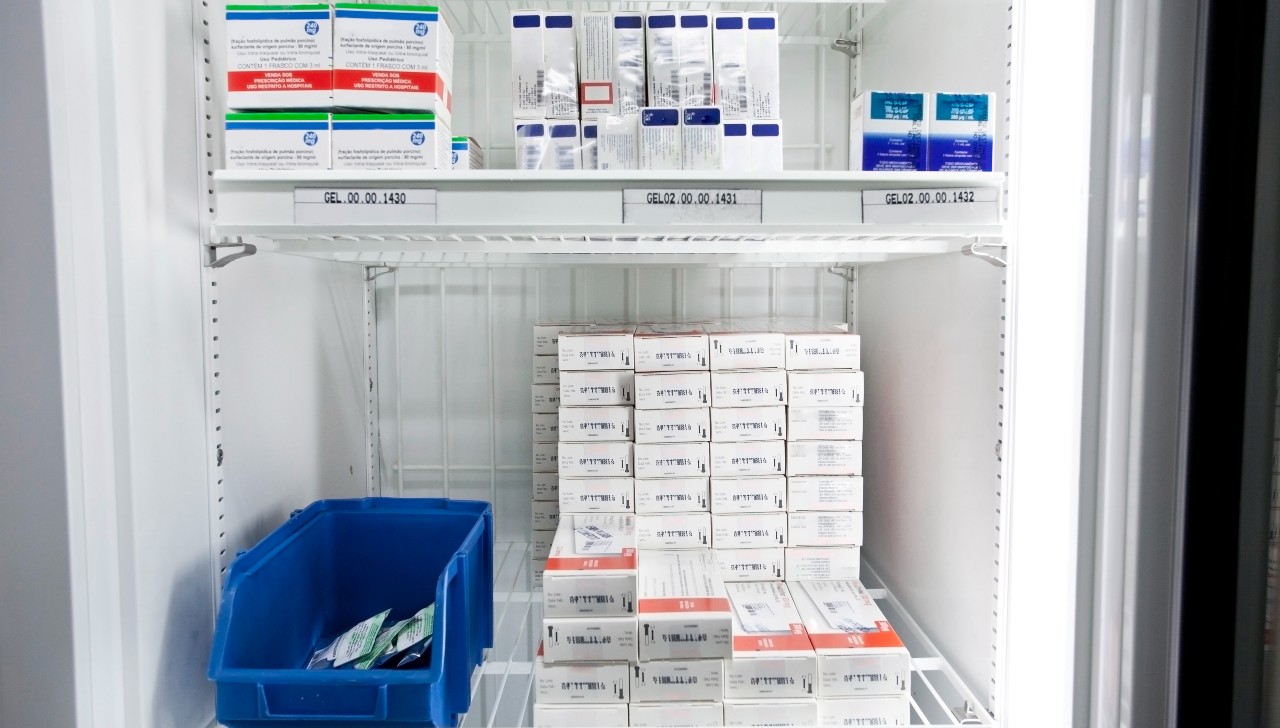





Get your weekly dose of the news and research you need to help advance your practice.
Protected by Google reCAPTCHA v3.

Australian Pharmacist is the official journal for Pharmaceutical Society of Australia Ltd.





